






A wild and wonderful world awaits you inside!
4 FACTOPIA! Follow the trail of hilarious illustrations and crazily connected facts. All the way from a penguin’s ‘tuxedo’ to… Marie Antoinette’s haircut!

6 SNAP IT!
1O EUREKA!
Fascinating inventions and discoveries. Including NASA’s snake-like robot that will search for alien life on one of Saturn’s moons and the secrets of the blinking mudskipper. Plus, how giraffes could be better at maths than they look!
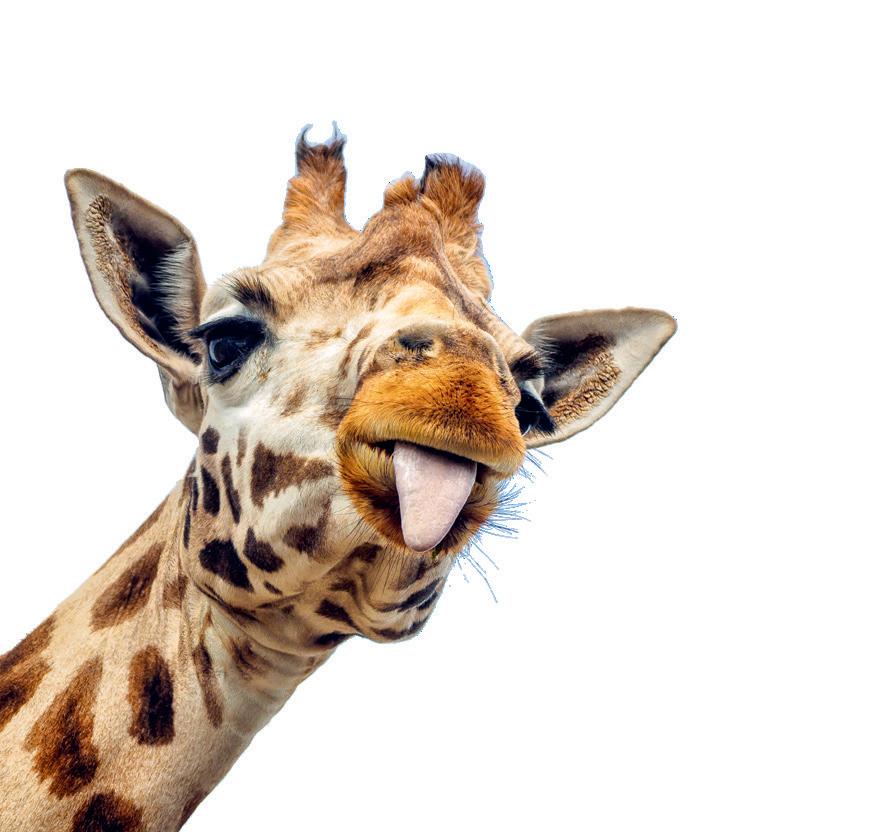


12 QUESTIONS OF SPORT


Prepared to be surprised, informed and entertained as we investigate Page 1O
Eye-popping photos to amuse and amaze. Including a rare lynx licking its lips, a building in Bangkok that looks like an elephant and an athlete who’s taken an unfortunate tumble!
some of the most intriguing questions posed by sport. Including: what is the best way to take a football penalty.
18 NOBODY KNOWS
One of the universe’s great unsolved mysteries.
19 ASK THE EXPERTS
Your chance to test Britannica’s brilliant experts. This month, what would happen if you flew a spacecraft into Jupiter…
2O COVER FEATURE: SHARK TALES!

Take a deep dive into the mysterious and fascinating underwater world of sharks. Includes a special pull-out shark poster on page 26!
28 THE BIG BRITANNICA FAMILY QUIZ

Stretch your brain power with a special four-page edition of our brilliantly tricky quiz. This month’s picture round is: great cities of the world.
32 INFOGRAPHIC: ALL CHANGE!
Our planet is changing all the time. Some changes take just a second while others are so slow we humans barely even notice them!

36 LISTIFIED!
From astronauts to athletes, meet 11 people who were famously runners-up. Plus, discover which dinosaurs were among the fastest – and slowest – on land.

38 JUMBO PUZZLES & GAMES
A four-page special featuring Animal Word Search, Spot the Difference, Picture Quiz, Connect the Planets and more!
42 DIY ACTIVITY
Find out how to make a colourful paper collage in the style of the great French artist Henri Matisse!
44 ABSOLUTELY EVERYTHING!
Our epic serialisation of the true history of the universe continues. This month, fossils and life in the early oceans.

48 SEND IT IN!
A music-loving cow stars in the illustrated fact of the month. Plus, enter your favourite joke or riddle in our new competition!
5O JOKES & RIDDLES
Hand-picked by our jokes editor May!
Follow the trail of crazily connected facts all the way from a penguin’s tuxedo to… Marie Antoinette’s hairstyle!
 By Kate Hale and Julie Beer
by Andy Smith
By Kate Hale and Julie Beer
by Andy Smith
A penguin’s


helps it camouflage while swimming – its white belly blends with the sky when viewed from below, and its black back blends with dark water when viewed from above
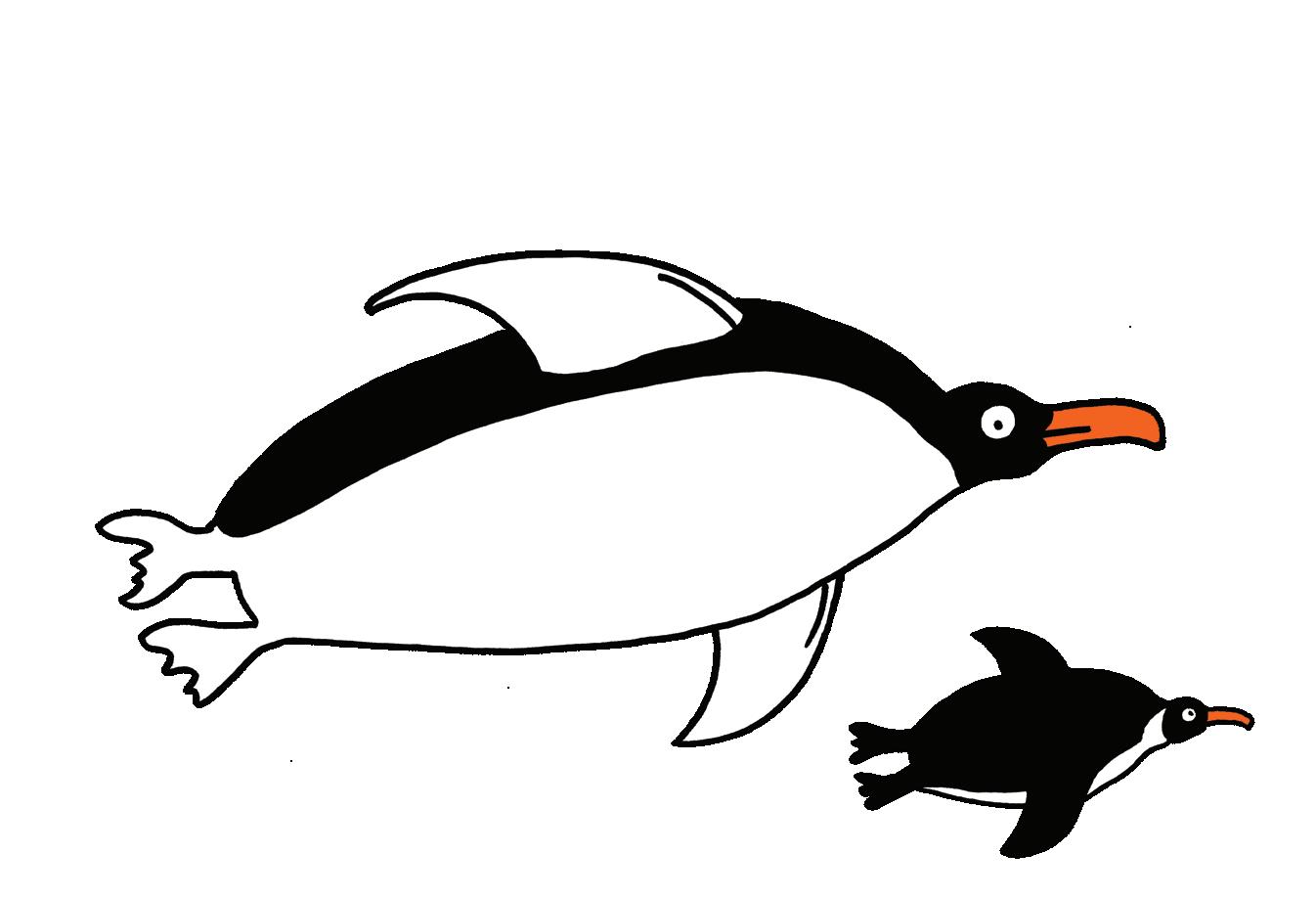

One musician composed songs specifically for cats. The music includes squeaks, birdlike chirping and even purring

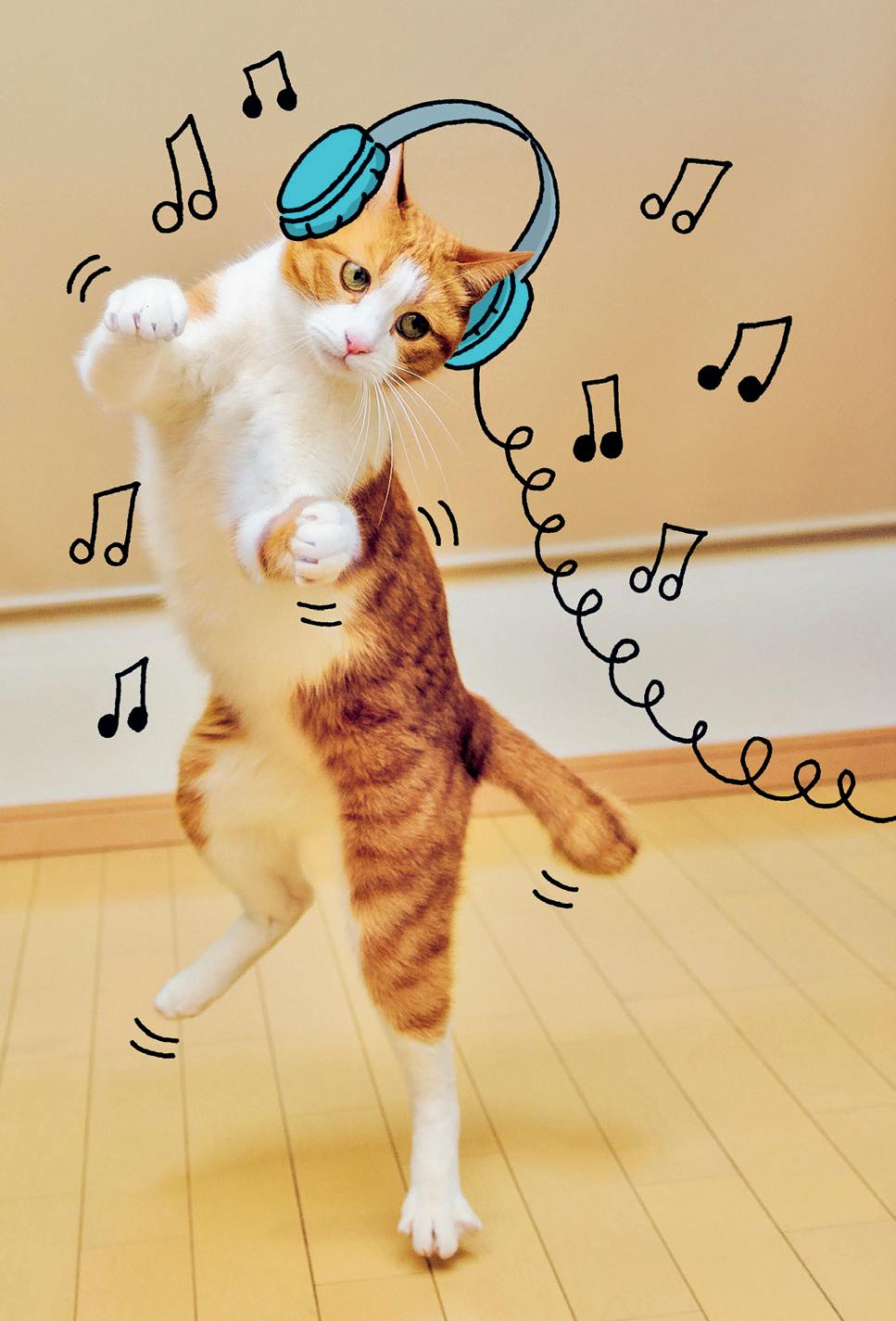
black-and-white ‘tuxedo’ black-and-white ‘tuxedo’
One African penguin at a German zoo escaped and accidentally and the zookeepers led the penguin to safety using a trail of fish
wandered into the lion enclosure. Fortunately, the lions were all asleep,
Lions have excellent night vision – they can see six times better in the dark than people can
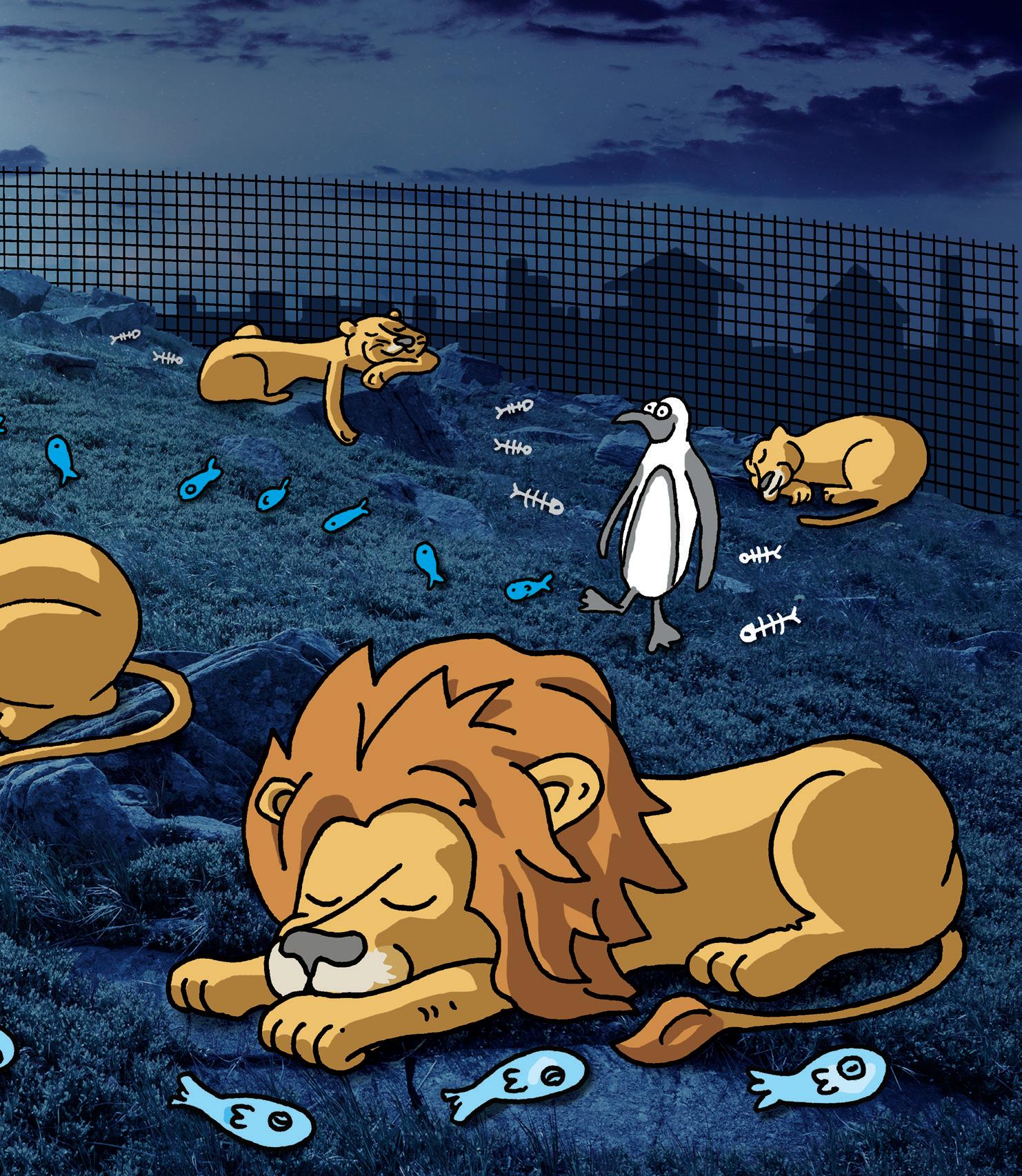
People who are allergic to pet cats are likely to be allergic to lions, too

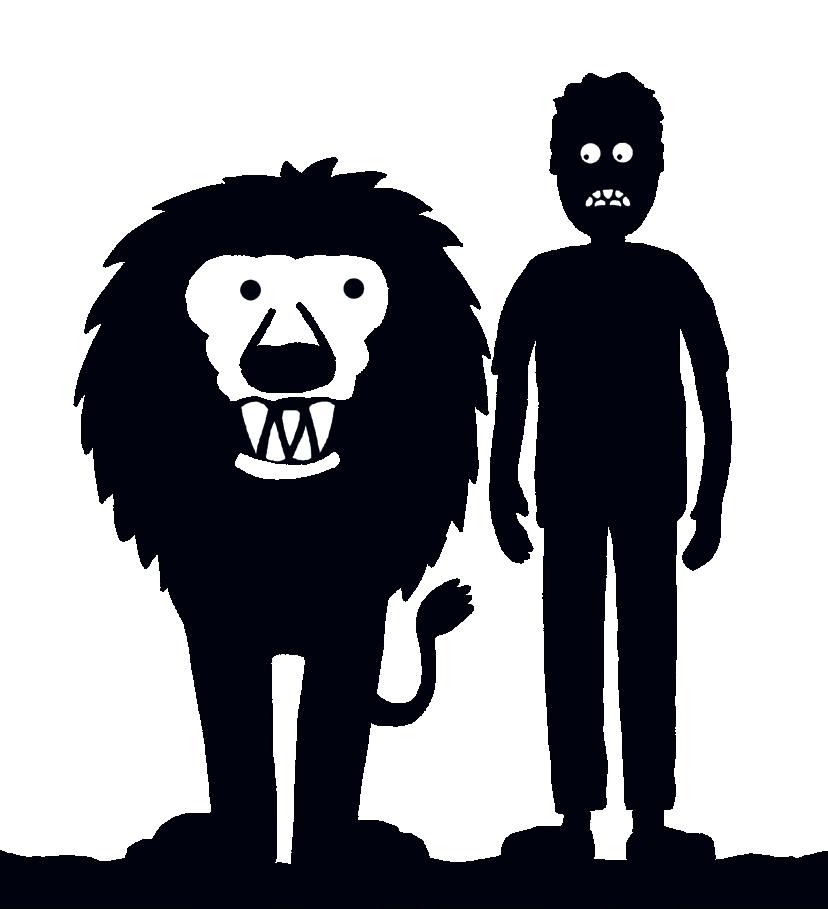
After their pet cats died, ancient Egyptians sometimes mummified them
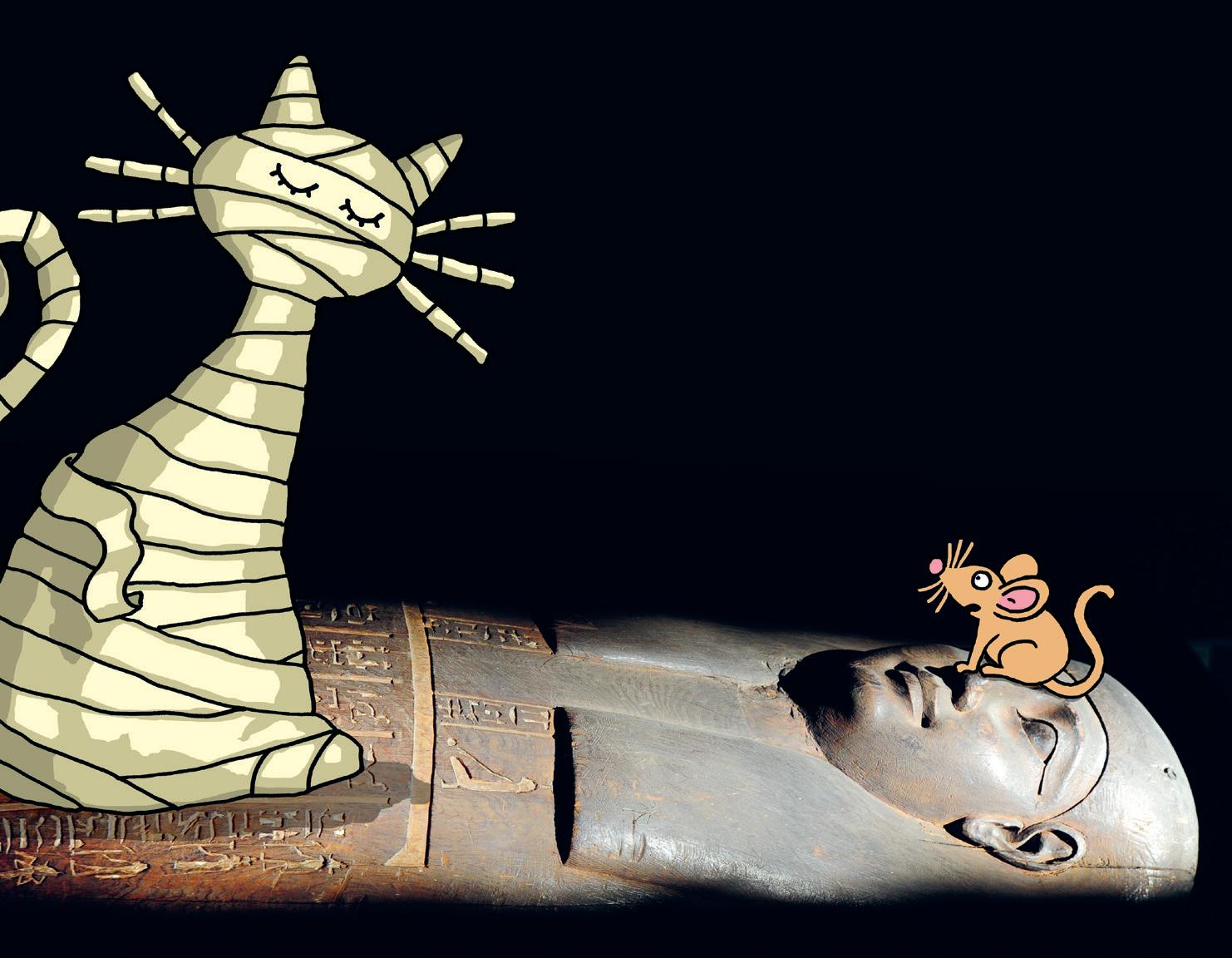
Egyptian pharaohs were buried with everything they would need for the afterlife – Pharaoh Khufu, who built the Great Pyramid at Giza, was buried with a 43.9-metre-long ship
Queen Cleopatra of Egypt was said to coat her boat’s sails with strongsmelling perfume



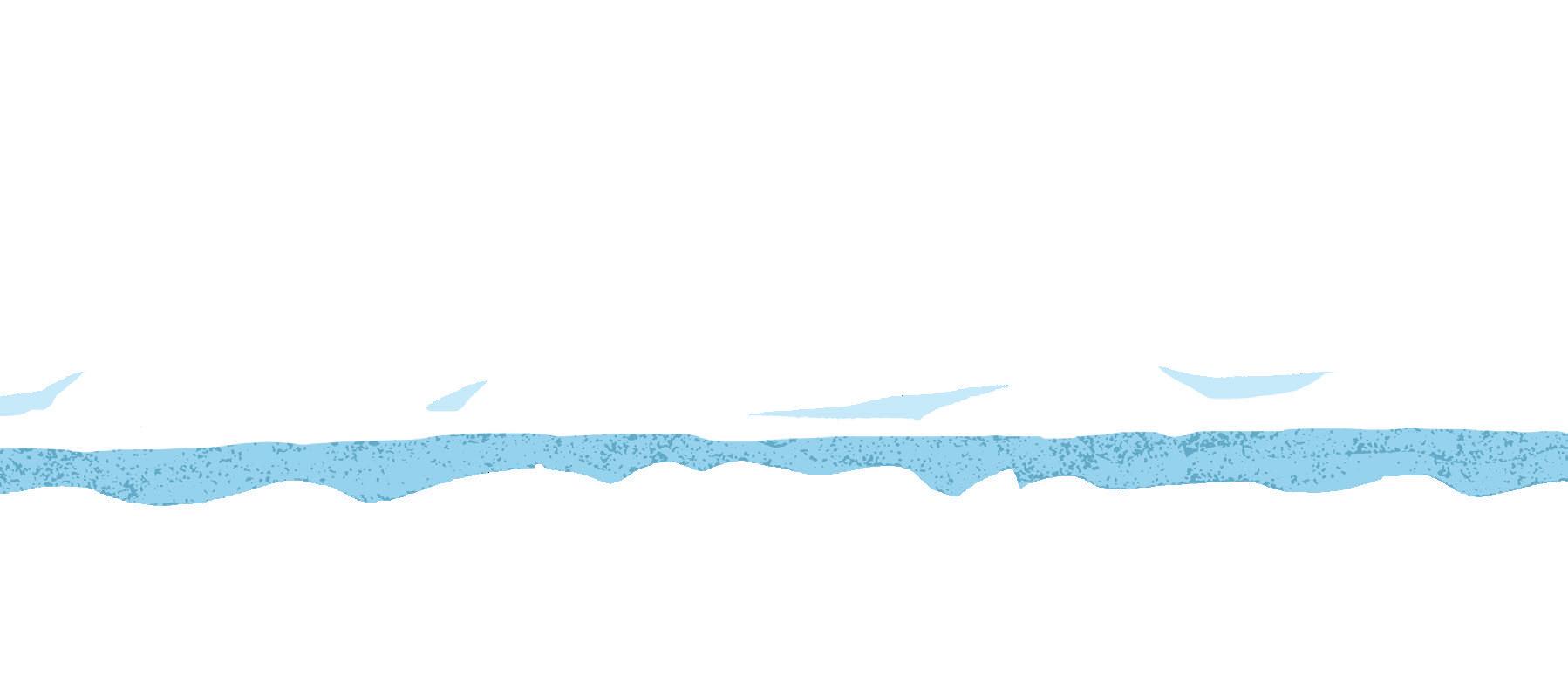
French queen Marie Antoinette once styled a model ship into her hair to celebrate winning a battle at sea!



This brave rider and her horse are competing in a barrel race. Each time the horse passes a barrel, it needs to slow down sharply before racing on to the next one!


The steeplechase is a longdistance running race in which athletes have to leap over a hurdle and water obstacle placed on the track. German athlete Lea Meyer unfortunately clipped the hurdle as she jumped over it, causing her to plunge head first into the water!






To take this stunning photo of the Moon rising above a mountain, Spanish photographer Jordi Coy had to be exactly six miles away from the mountain. Jordi then put his camera in the perfect position so that the Moon would look as if it was rising out of the mountain. As you can see, it’s a brilliant trick!




This Iberian lynx cub is having a drink at a watering hole in Castilla-La Mancha in Spain. Unfortunately, the Iberian lynx is one of the most endangered animals in the world. Scientists estimate that there are just a few hundred left living in the wild. However, thanks to conservation efforts, their numbers are rising.



You can find this extraordinary building in Bangkok, which is the capital of Thailand in Southeast Asia. Unsurprisingly known as the Elephant Building, it has 32 storeys filled with flats, offices and shops. This elephant even has its own bank and post office!

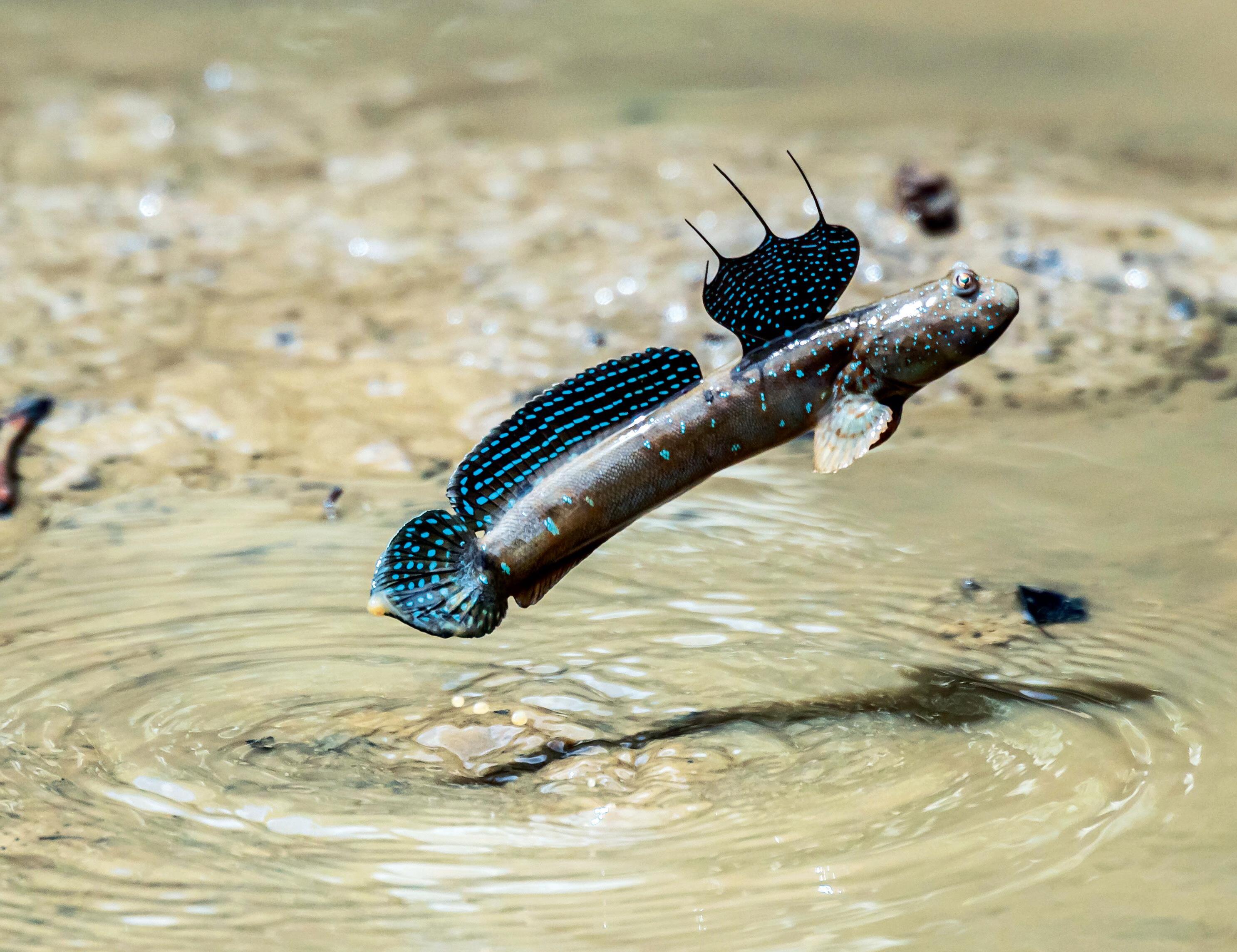
Mudskipper fish are extraordinary animals for several reasons, including the fact that they live on both land and in water. They are also the only fish that blink! Scientists at Penn State University, USA, have been studying mudskippers’ blinking to understand why they do it – which, as with humans, is mostly to clean and protect their eyes – and to discover more about how this unusual behaviour for fish helps them to survive on land as well as in the water. This could provide fascinating clues as to how, hundreds of millions of years ago, humans’ fishy ancestors evolved to become land animals, too.
We have yet to find evidence of life anywhere else in the universe – apart, of course, from here on Earth. But as the search continues, NASA is designing a new snake-like robot to explore Enceladus, one of the moons of Saturn.
The Exobiology Extant Life Surveyor (which is known as EELS for short) is being developed for a space mission to Enceladus, which is known for its icy and highly reflective surface. Scientists think that

there is a liquid ocean beneath the moon’s surface which could contain life. EELS is therefore being built out of segments which have unique ‘rotating propulsion units’ that allow it to both grip solid surfaces and move underwater.
Scientists hope that this ingenious self-propelled robot snake will be able to slither its way through vents, or openings, on the surface of Enceladus to enter and then explore the ocean beneath.
 An illustration of the EELS robot on Saturn’s icy moon Enceladus.
An illustration of the EELS robot on Saturn’s icy moon Enceladus.
The latest astonishing discoveries, inventions and scientific breakthroughs.
What do you know about giraffes? Probably that they’re the tallest land animal and can sleep standing up. That’s all very impressive but did you know that giraffes might also be skilled mathematicians? In a new study at Barcelona
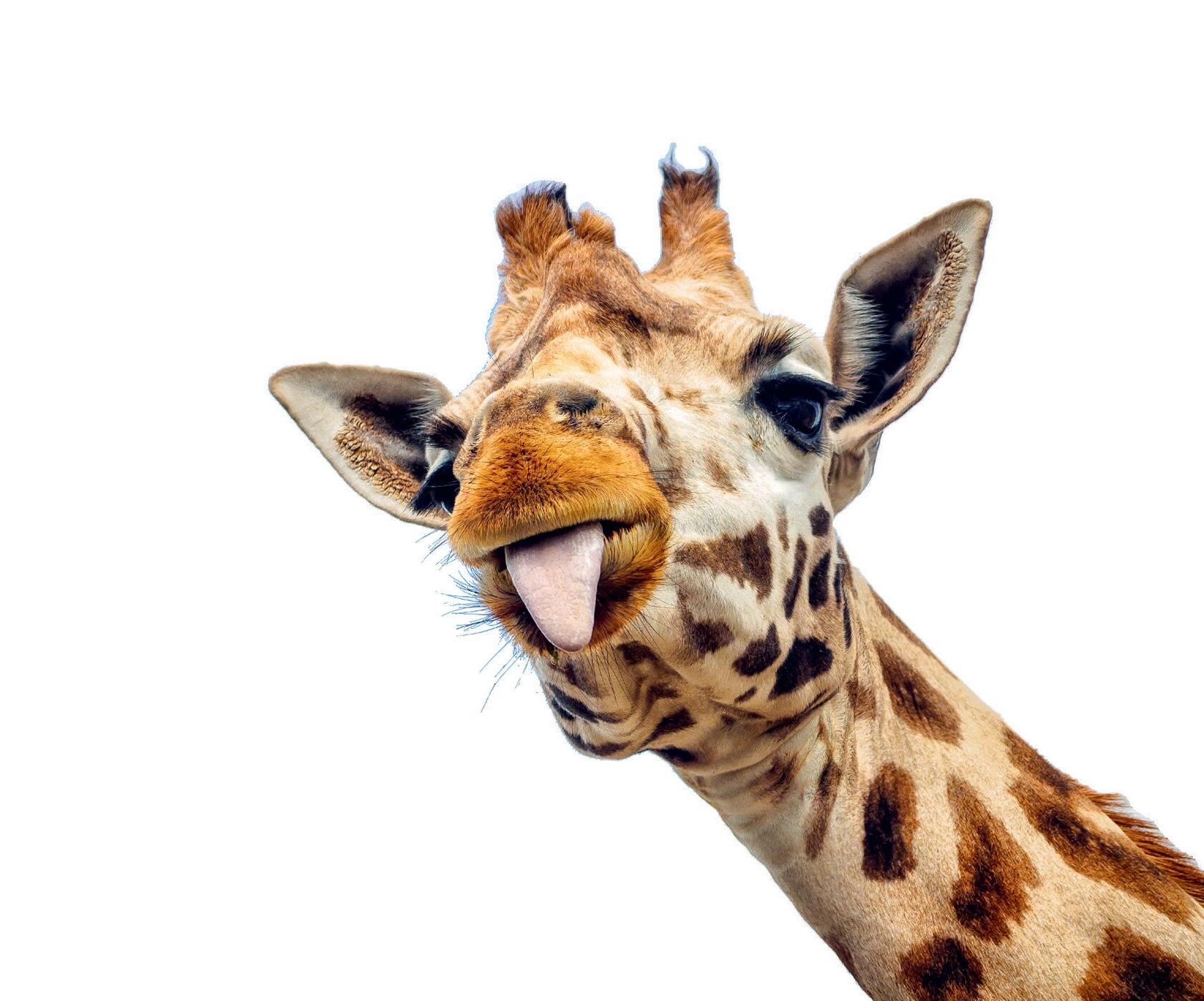
Zoo in Spain, giraffes were offered a choice between two vegetables taken at random from see-through containers filled with different ratios of courgettes and carrots (which giraffes prefer). The giraffes couldn’t see the two vegetables
until they’d chosen which one to eat but, almost every time, they picked the vegetable taken from the container which had the higher proportion of carrots, thereby
increasing their chances of getting a carrot. This suggests that giraffes understand ratios!
Scientists in Germany have recreated a type of bacteria that has not been alive on Earth for tens of thousands of years, all thanks to the Stone Age tooth of a Neanderthal. The Neanderthal’s tooth, pictured below, contained the bacterium’s DNA and, by reading its genetic code, scientists were able to recreate it. This is a great scientific achievement, but why would we want to bring back ancient bacteria? The reason is that bacteria produce chemical molecules that are sometimes very useful in medicine. Reviving ancient bacteria in this way could lead to the discovery of new life-saving antibiotics.


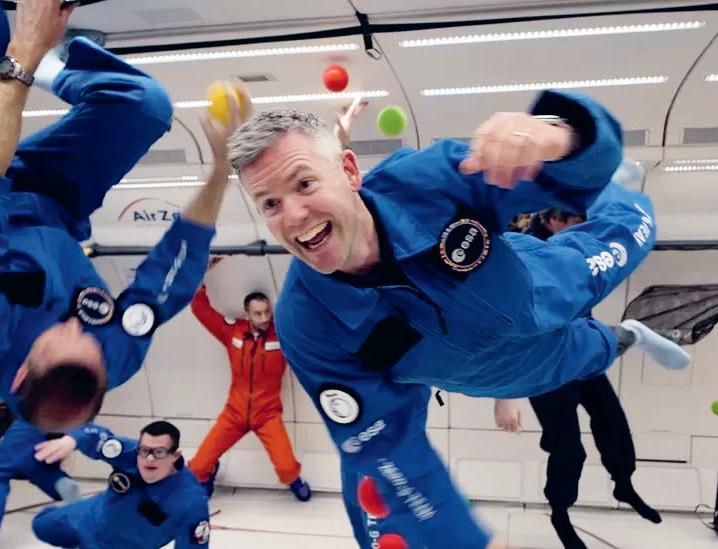
John McFall, pictured above, lost his right leg in a motorbike accident when he was 19 years old. John had to learn to walk and then run using a prosthetic leg. He loved running and, after training hard, represented Great Britain at the Paralympic Games in 2008, winning a bronze medal. However, John’s heroic feats did not stop there. He later applied to work on a project for the European Space Agency (ESA) which is aiming to make
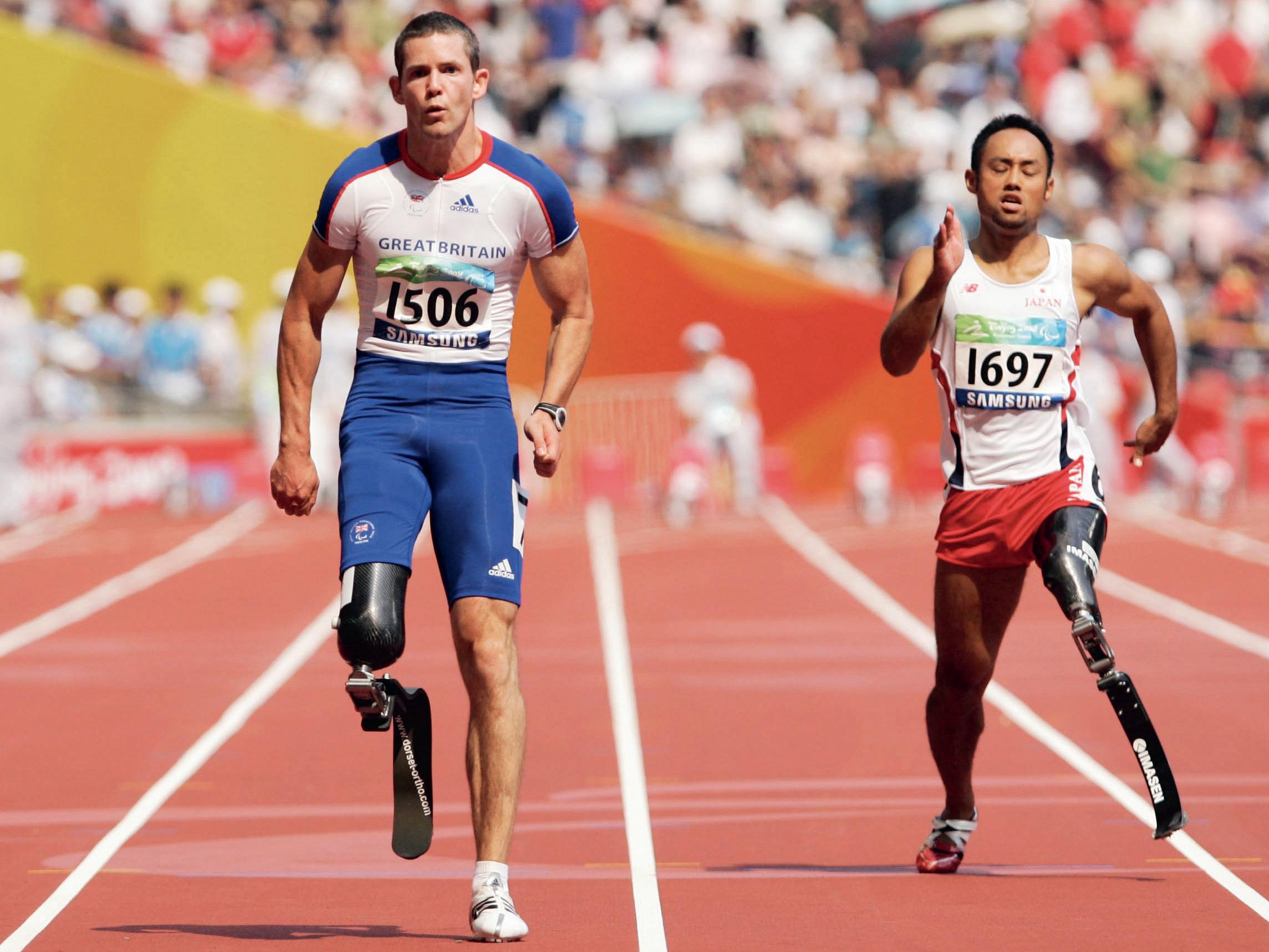
spaceflight more accessible for people with disabilities.
For example, in the picture above, John is inside a specially designed aeroplane that
mimics the effects of zero gravity. He is doing this to investigate how his prosthetic leg might behave in outer space. And because the technology inside John’s prosthetic relies on Earth’s gravity to function correctly, it will need to be redesigned before it’s ready to be used on a full space mission. ‘I’m very much following my heart and my curiosity,’ John says, ‘and I’m following my passion for science and life.’
Bacteria on a Neanderthal’s tooth brought back to life


Preparetobesurprised,informed andentertainedasweinvestigate someofthemoreunusualand intriguingquestionsposedbysport.
Mostpeople(around89%)areright-handedand just10%areleft-handed.Yetifyoufollowthe performanceofprofessionalathletesinsports thatdemandsuperbhand-eyecoordination, suchastennis,cricketandbaseball,you’ll noticethatfarmorethan10%ofthetopplayers areleft-handed.(Thisincludesthetwogreat tennisplayerspicturedonthispage:Martina NavratilovaandRafaelNadal.)Sportsscientists havetwopotentialexplanationsforthis.The firstisthatthewayleft-handedpeopleplay containsanelementofsurprise,becausethe anglesatwhichtheyhitorthrowtheball aredifferenttothemajorityofright-handed people.Thesecondisthat,accordingto scientificstudies,thetwohemispheres,or halves,ofleft-handedpeople’sbrainsare betterconnectedthanright-handers’brains, whichhelpsleft-handerstoreactmorequickly.

Beingleft-handedisclearlyanadvantageinthe gameofbaseball,where30%ofthetoppitchers throwwiththeirlefthands.Butwhatabout peoplewhoareambidextrous(whichmeans theyareabletouseboththeirhandswithequal easeandskill)?Asfewerthan1%ofpeopleare ambidextrous,there’snotenoughevidenceto sayconclusively.Buttheambidextrouspitcher PatVenditte,picturedleft,wassosuccessful thatbaseballofficialshadtointroduceanew rule,whichsaidthatambidextrouspitcherslike Vendittehadtotellthebatterwhichhandthey weregoingtousebeforetheythrewtheball!

QHowlongwasthelongestever professionaltennismatch?
AThelongestrecordedtennismatch lastedforastaggering11hoursand 5minutes.ItwasplayedbetweenJohn IsnerandNicolasMahut.Isnerwonthe fifthandfinalset7Ogamesto68!

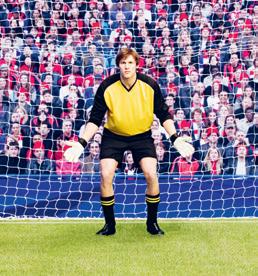

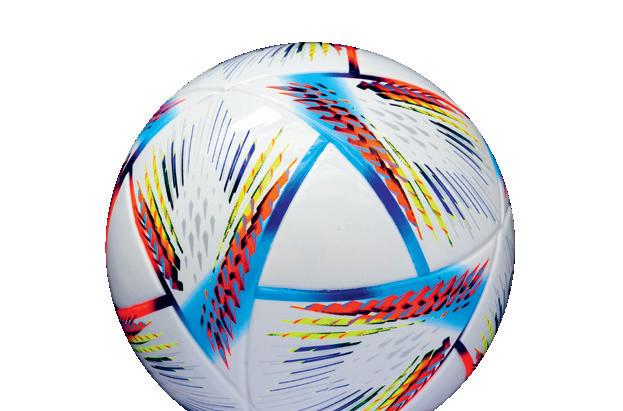


Q onHowmanypanelsarethere astandardfootball? A fromRegulationfootballsaremade leather32individualpanelsoforplastic.Twelveofthe panelsarepentagonsandthe remaining2Oarehexagons.
Takingapenaltykickisoneofthemost ofnerve-rackingthingsyoucandoinsport.Lots duringfamousplayershavemissedone,especially theaddedpressureofashoot-out.So howcanyoumaximiseyourchanceofscoring? followingMostfootballcoacheswilladviseyoutodothe fourthings.First,beforeyoustepup goaltotakeyourpenalty,decidewhichpartofthe you’reaimingfor.Andonceyou’vepicked someyourspot,don’tchangeyourmind!Second,take deepbreaths.Keepingcalmwillhelpyou can,tofocus.Third,striketheballascleanlyasyou follow-throughwithyourheadovertheballandwithafull toyourkick.Fourth,practise doingasoftenasyoucan.Itwillhelpprepareyoufor Nowitforrealinahigh-pressuresituation. thatyou’vemasteredyourpenaltyquestiontakingtechniqueit’stimetotacklethetrickiest traditionalofall:whereyoushouldaim.The advicewastoaimforthecornersof thegoal,awayfromthegoalkeeper.Butseveral thestatisticalstudies,includingtheoneshownin middlegraphicabove,suggestthataimingatthe ofthegoalgivesyouthebestchance orofscoring,asthegoalkeeperleapstotheleft rightinanticipationofyourkick.Goodluck!
Q objectWhatisthefastest-moving insport? ASurprisingly,theansweris hasabadmintonshuttlecock,which beenrecordedtravelling thanat3O6.3mph.That’sfaster aFormula1racingcar!
Q anyoneWhatisthefastesttime hasrunamarathon? ATheonlypersontohaverun amarathon,whichisarace undercontestedover26.2miles,in twohoursisKenya’s thisEliudKipchoge.Heachieved historicfeatin1hour, 59minutesand4Oseconds.
Q forWhatisthefastesttime awheelchairmarathon? A wheelchairTheworldrecordforamarathoniseven setfasterthanKipchoge’s.Itwas HugbySwitzerland’sMarcel in1hour,17minutesand which47seconds,breakingarecord hadstoodfor22years.

Q
A KorenekSpeedcyclistDeniseMuellerbecamethefastestpedallingpersononabicyclebyat183mph!She bikerodeaspeciallydesignedacrosstheBonnevilleSalttoFlatsinUtah,USA,in2O18 setanewworldrecord.
hasWhatisthefastestahuman evercycledonabicycle?
Q thatinternationalWhatistheoldestsportingtrophy isstillcontestedtoday?
A competitionTheAmerica’sCupisasailing firstheldmore whenthan17Oyearsagoin1851, anAmericanyachtbeat theaBritishyachtinaracearound championsIsleofWight.Thecurrent areNewZealand.
BALLSWHYDOCRICKET SWING? leatherIfyouplayagameofcricketusingahard sometimescricketball,youwillnoticethattheball swings,curvingtotheleftorrightusuallyofthepathofitsoriginaldirection.Thisis goodnewsforthebowlerandbadnews forthebatterbecausetheunexpectedchange intheball’sdirectionmakesitmoredifficult swingforthebattertohit.Sowhydocricketballs inthismysteriousway? scienceAswithmanyintriguingsportingquestions, movementhastheanswer!It’salltodowiththe ofairaroundthesurfaceoftheball sidesandthefactthatacricketballhastwodistinct separatedbyaraisedseam.Whenonesideoftheballbecomesrougherthantheother, airmovesacrossthetwosurfacesatdifferent andspeeds.Thisisbecauseairmovesmorequickly easilyoversmoothsurfacesandmore surfaces.slowlyandwithgreaterdifficultyoverrough Thedifferenceintheairspeed side,aroundtheballcreatesadragontherough causingthepathofthecricketballto thecurveinthatdirection.Theillustrationon leftshowshowthishappens.Theblue arrowsrepresenttheflowofairandthe whitearrowsshowthedirectionoftheball.
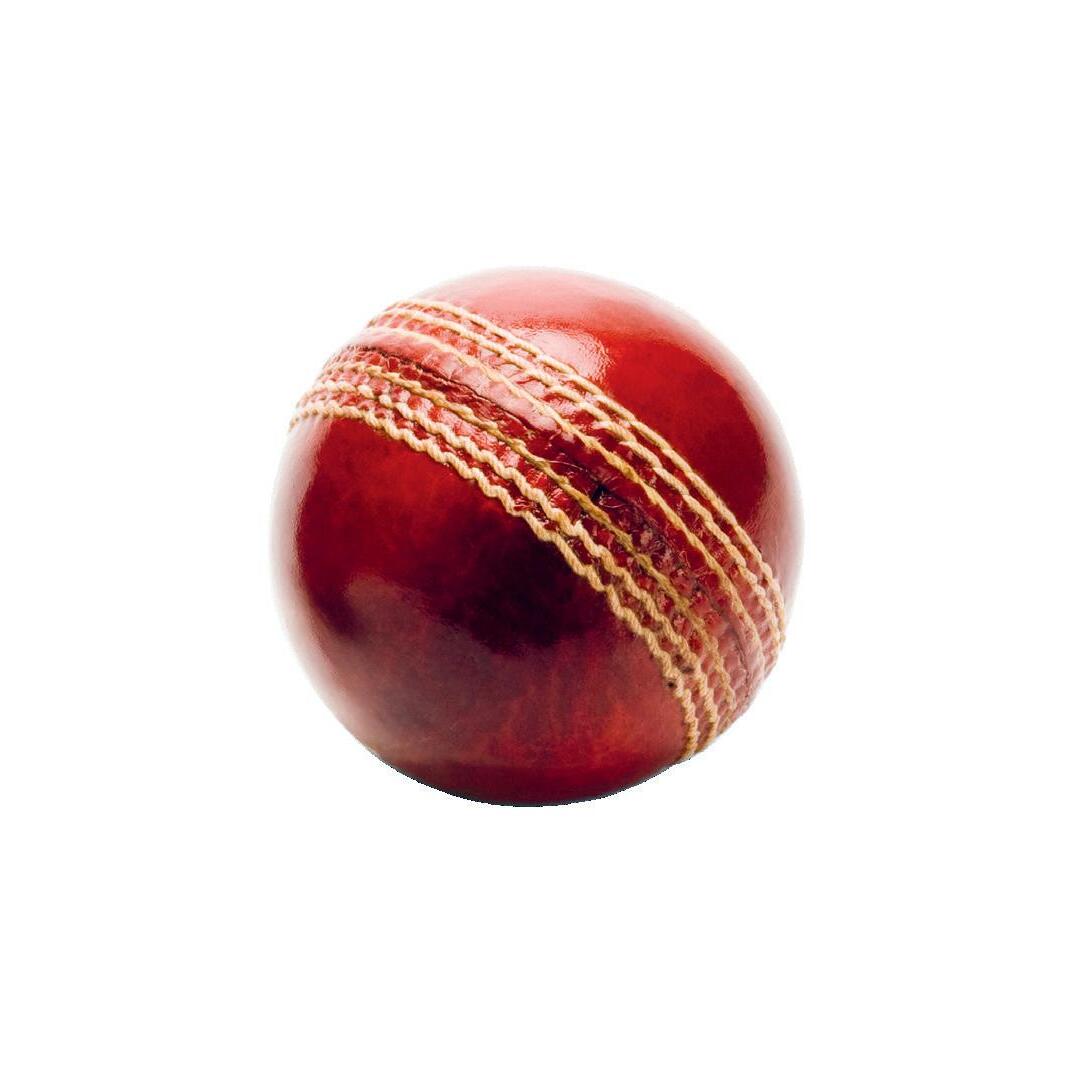
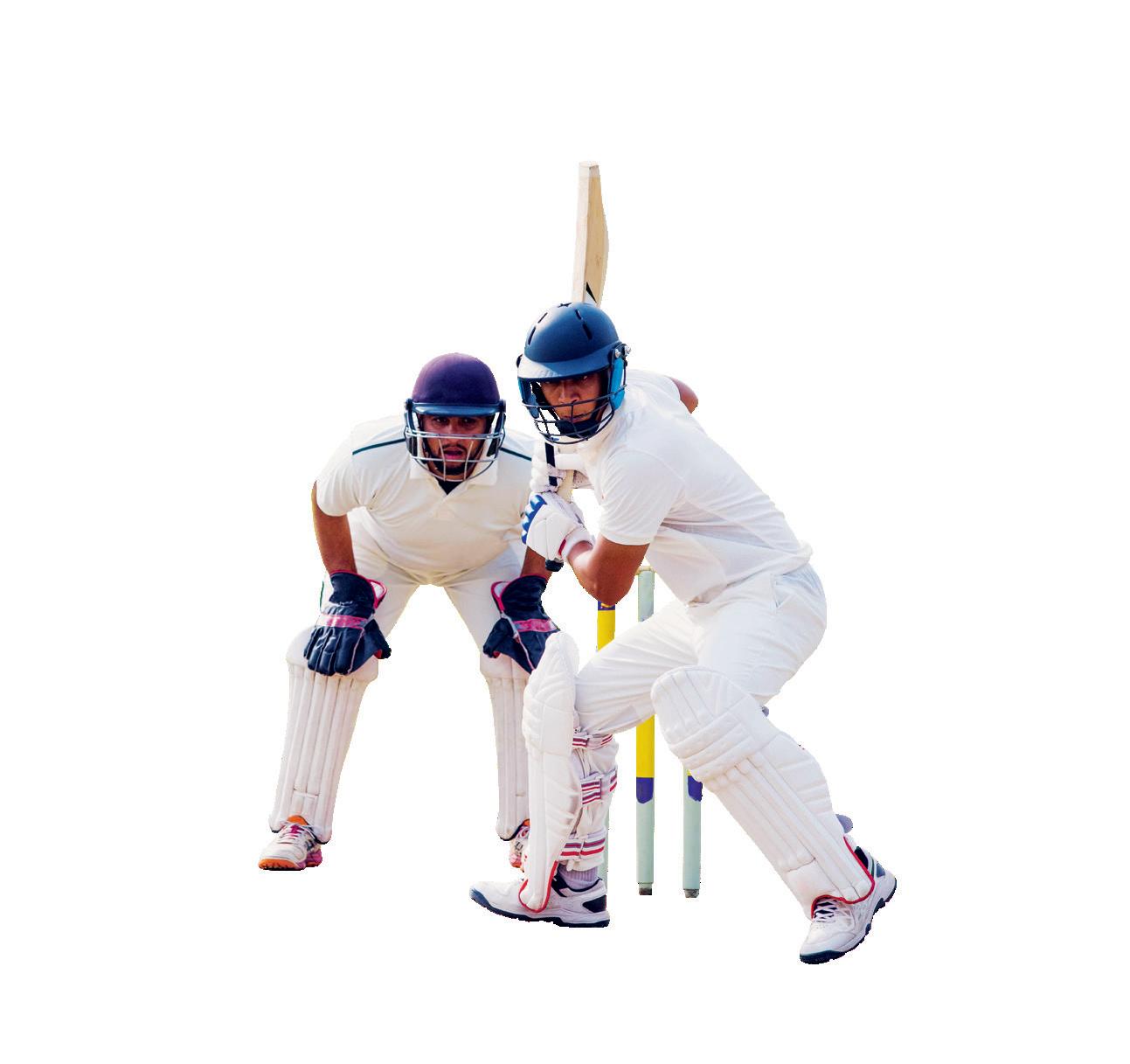
Q theWhichcricketerhasplayed internationalmostconsecutivematches?A representedBatsmanAlastairCook Englandfor May159matchesinarowbetween 2O18,2OO6andSeptemberwithoutmissingasingle gamethroughillnessorinjury.
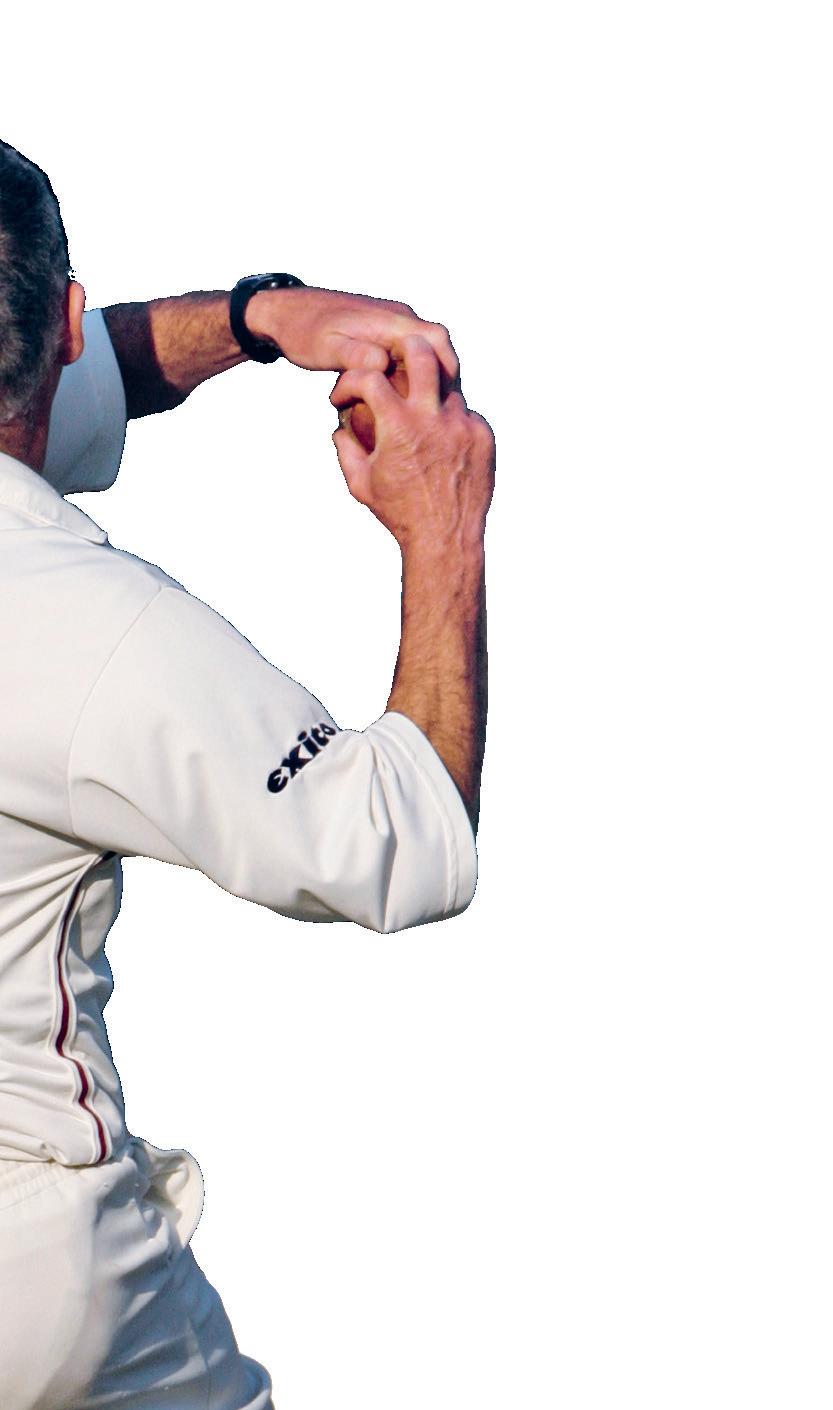

Q theWhichsportspersonenjoyed withoutlongestwinningstreak everbeingdefeated?
A differentIt’shardtocomparebetween sports,butoneof thegreatinvincibleswasthe EstherwheelchairtennisplayerVergeer,picturedright.VergeerOveraperiodoftenyears, wonanincredible 47Otennismatchesinarow!

QWhatdothecolouredrings ontheOlympicflagrepresent? AsignifyThefiveinterlinkedringsthecomingtogetherof thefiveinhabitedcontinents: Africa,theAmericas,Asia, EuropeandOceania.
QpersonWhoistheyoungest evertowinan Olympicgoldmedal? AMarjorieGestringwasjust 13yearsoldwhenshewongold atthe1936BerlinOlympicsin thethree-metrespringboard divingcompetition.
QathleteWhatisthehighestanhaseverjumped? A2.45metres–bytheCuban highjumperJavierSotomayor, whosetanewworldrecordin 1993thathasyettobebeaten!

QOlympicWhohaswonthemost goldmedals? A Theleadingmaleathleteis USswimmerMichaelPhelps with23golds.Russiangymnast LarisaLatyninaistheleading femaleathletewithninegolds.
Thelong-distancerunnerspicturedleftare trainingataspecialcamphighintheSwiss Alps.Theyhavecometothemountains becausetrainingathighaltitudesimproves athletes’performance.Thisisbecausetheair islessdense,or‘thinner’,athighaltitudes, whichmeansthattherearefewer moleculesofoxygenineachbreathofair forthelungstoabsorb.Tocompensate forthelowerlevelsofoxygen enteringthebloodstream,thebody producesmoreredbloodcellsto helpdelivermoreoxygentothe muscles.Whenathletesthen competeatloweraltitudes, theirbodiesbenefitfrom boththehigherlevelsof oxygenintheatmosphere andthehigherlevelsof redbloodcellsintheir bloodstream.Thishelps themtorunfaster,especially overlongerdistances. Thebenefitsofaltitude trainingtypicallylast between10and20days.
QWhenwerethefirst ParalympicGames? AThefirstParalympics,which areaninternationalsports competitionforpeoplewith disabilities,wereheldinRome, Italy,in196O.Morethan 15Ocountriescompetedin themostrecentParalympics, inTokyo,Japan,andthey werewatchedbyaglobalTV audienceof4.25billionpeople.

Thefastesthumanbeingonrecordisthe JamaicanUsainBolt,picturedabove,who reachedatopsprintingspeedof27.78mph whilecompetinginthe2009AthleticsWorld Championships.Itislikelythatatsomepoint inthefuture,afitter,stronger,fasterathlete willshaveafewfractionsofasecondoffBolt’s time.Buttherearelimitstoahuman’speak runningspeedoverlongerdistancesthatare setbyourbiology.Thisisbecauseourbodies needoxygentobreakdownasugarmolecule calledglucoseinordertocreateenergy.Andif there’snotenoughoxygeninthebloodstream, thebodyproduceslacticacidinstead,which causesmusclestocrampandweaken.During ashortsprint,thereisusuallyenoughoxygen inthebloodstreamforthemusclestokeep workingthroughouttherace.Butoverlonger distances,thebodyjustcan’tkeepupwiththe muscles’demandsforoxygen.In1954,Roger Bannisterbecamethefirstathletetoruna mileinunderfourminutes.Butthanksto thelimitsofhumanbiology,itislikelythat noonewilleverbeabletorunamileinunder threeminutes.NotevenUsainBolt!
Inapreviousissue,wefeatured the1Ofastest-movingobjects insportasaposter.Emailusat editor@britannicamagazine. comandwewillsendyoua digitalcopytoprintathome!

Antarctic fur se a l s can migrate to withi
Readers ask. Experts answer. Send your questions to: experts@britannicamagazine.com

Planetary scientist
Question: What would happen if humans tried to land on Jupiter?

From Finn, age 13
Because Jupiter is largely made of hydrogen gas and helium gas, it doesn’t have a solid surface to land ‘on’. But it’s still useful for scientists to define an imaginary surface on Jupiter, so that we can say how big the planet is. This imaginary surface is defined as being the distance from the centre of Jupiter at which the atmospheric pressure is the same as the atmospheric pressure here on the surface of Earth – in other
words, the same pressure you’re feeling right now from the atmospheric gases that surround you. This point is roughly 40 km above the clouds that you can see in images of Jupiter.
So, what would happen when you fly into Jupiter?
Once you pass through the clouds, things get dark and the temperature and pressure of the atmosphere rise – rapidly! By the time you’re only 2 per cent into Jupiter (that’s about 1,400 km beneath the surface),

temperatures are a scorching 2,200°C and pressures 12,000 times greater than they are on Earth’s surface. That’s enough pressure to melt steel and crush any submarine!
As you descend towards the centre of Jupiter, temperatures approach 20,000°C and are combined with mind-boggling pressures 100 million times greater than you are experiencing now.
Scientists were
recently shocked to discover that, contrary to what we had thought for decades, Jupiter doesn’t have a small, solid core at its centre. Instead, it has a much larger ‘fuzzy core’, which is spread out over half of the planet’s insides! We don’t yet know why this is, but it is one of the things that NASA’s Juno spacecraft, which is currently in orbit around Jupiter, is trying to figure out.
DID
Jupiter is the biggest planet in our solar system. It’s so enormous that you could fit all the other planets in the solar system inside it!
Diameter: 142,984 kilometres
Mass: 318 times greater than Earth’s
Volume: 1,321 times greater than Earth’s
Made of: mostly hydrogen and helium
Length of day: 9.93 hours
Length of year: 11.86 Earth years
Time it takes sunlight to reach Jupiter: 43 minutes
Number of moons: 92
An illustration of Jupiter’s atmosphere.Sharks are among the most thrilling and interesting animals on Earth. Here we take a deep dive into their underwater world to find out what makes them so amazing…
Sharks have such a powerful sense of smell they could detect a single drop of blood in a bathtub of water!

Sharks are some of the oldest animals on Earth. They first emerged more than 300 million years ago and there are still more than 300 species, or types, of shark swimming in our seas today. As you will discover when you see our fantastic pull-out poster on page 26, sharks come in all shapes and sizes. The giant, 19-metre-long whale shark is the largest living fish, while the smallest shark, the dwarf lantern shark, is only about 17 centimetres long. On the following pages, you can
explore the fascinating world of sharks to find out how they hunt and reproduce and why their bodies are so well adapted to their environment. Here are five fascinating shark facts to get you started:
A shark’s ears are sensitive enough to hear sounds from several hundred metres away, helping it to locate prey.
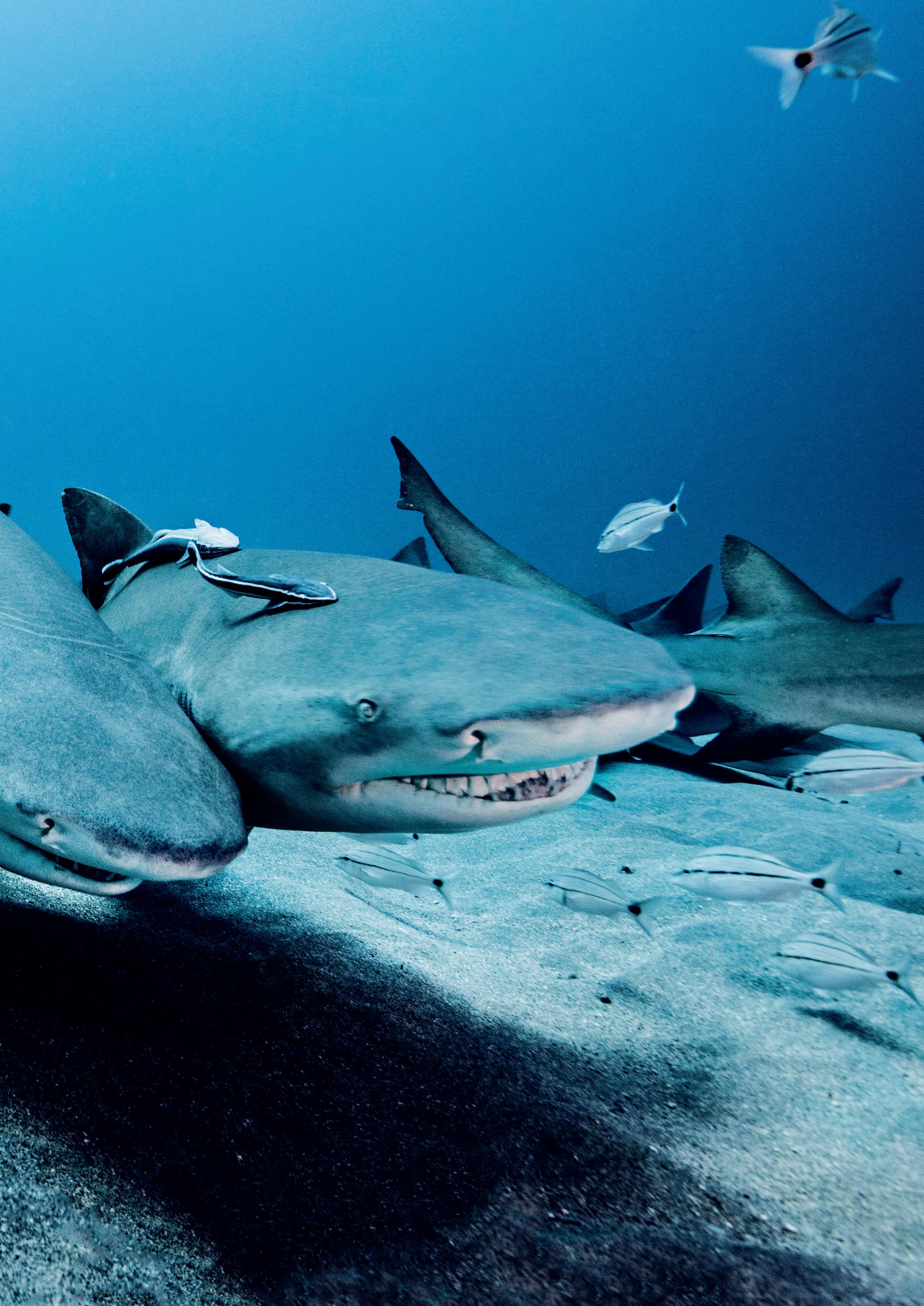
• Sharks living in cold water can heat their eyes using a special organ next to a muscle in their eye socket. This helps them to hunt for prey even in
extremely cold temperatures.
• Sharks cannot stop swimming suddenly. They have to keep moving forwards, or to the left or right. They also cannot swim backwards.
• Although shark attacks are widely reported, on average sharks kill just five humans a year. Humans, on the other hand, kill more than 100 million sharks each year for their fins or teeth, or for sport.
• Sharks have some of the most powerful bites of any living animal. Scientists estimate that the bite force of the great white shark is more than three times more powerful than a lion’s.
• Sharks are also famous for their speed through the water. Most species can swim between 20 and 30 miles per hour. But the fastest of all is the mako shark. It has been recorded swimming at more than 60 miles per hour!
Continued on next page
Continued from previous page
Thanks to the shape of its head, the hammerhead is one of the most instantly recognisable types of shark. Their oddly shaped heads also give them several useful advantages.

First, their eyes are located on the ends of the narrow blades of their heads. This gives hammerheads a wider field of vision than any other shark, allowing them to see in almost every direction at once.
Hammerheads also hunt using electroreception, a sense that sharks and some other animals have but we humans don’t. This ingenious sense enables sharks to detect electrical signals given off

Sharks reproduce in one of three ways. In some types of shark, the female gives birth to live young in the way that most mammals, including humans, do. In other types of shark, the young hatch from
by prey animals, even in the dark. The hammerhead shown in the illustration above is using its sense of electroreception to find a fish hiding on the seabed below.
The large, elongated shape of the shark’s head also helps it to search for prey over a larger area of the ocean floor as it swims.
Hammerhead sharks can give birth to as many as 4O baby sharks, which are called pups, in one litter.

eggs inside the female’s body and then are born. In a third type of shark, the female lays leathery rectangular eggs, pictured right, that become attached to rocks and seaweed.
The baby sharks
hatch from these eggs days or weeks later.
The horn shark lays an egg that is shaped like a corkscrew.
The egg’s unusual shape helps hold it in place in rocks and crevices, so that it isn’t washed away.
Sharks continue to grow throughout their lives, although the rate of growth slows as they get older.
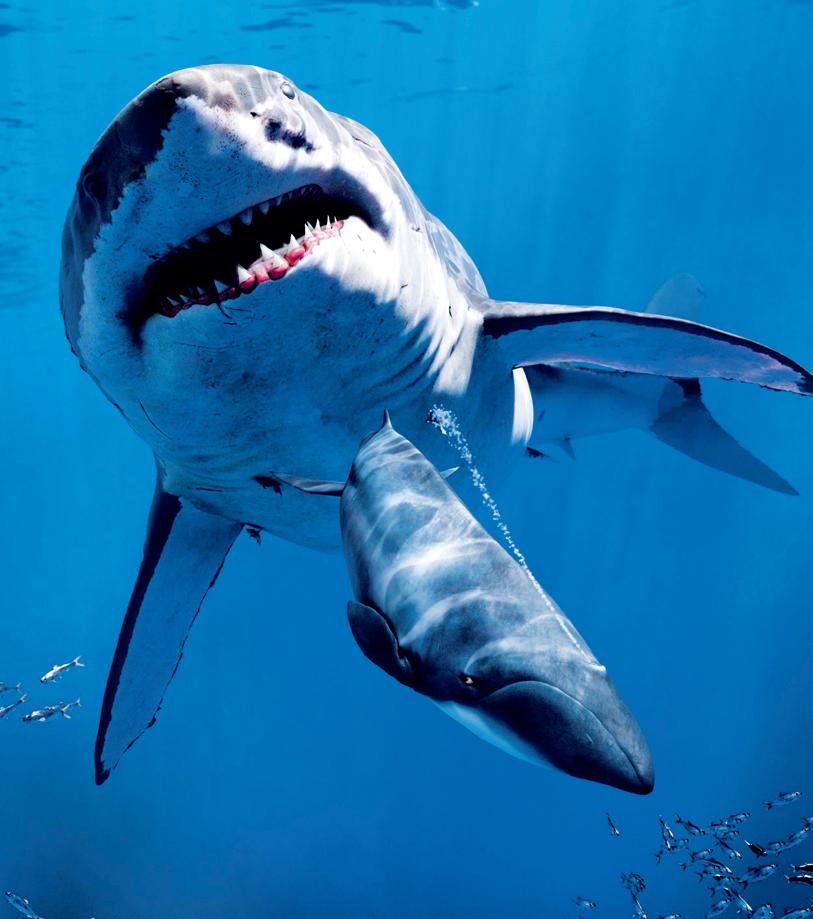

Megalodon was a species of gigantic shark that swam in Earth’s oceans between 23 million and about 2.6 million years ago. As you can see from the illustration below, which shows Megalodon chasing a whale, it was a giant of the seas. In fact, scientists think that it is the largest shark, as well as the largest fish, that ever lived. How did the Megalodon get its name? The word means ‘giant tooth’. And by studying Megalodon’s fossilised teeth, scientists estimate
Megalodon’s teeth were much bigger than a great white shark’s.

that it could have grown to lengths of more than 20 metres (which is more than three times longer than a great white shark!) and weighed as much as 60 tonnes (which is more than seven African elephants!). It ate fish, whales and seals among other marine prey.
Some species of shark are masters of disguise. This helps them to hide from predators – or to lie in wait to ambush prey of their own! Can you spot the camouflaged sharks hidden in these three photos?



Sharks have been swimming in the oceans for 45O million years, making them one of the most successful species on Earth. Here we look inside a shark to discover the secrets of its amazing anatomy…
A shark’s snout is covered in small pores, or holes, called ampullae of Lorenzini. These pores can detect tiny electrical currents in the water which are given off by the shark’s prey.
These are used for smelling, not breathing.
A shark has eyes on either sides of its head, which gives it almost 36O° vision.
The shark’s jaw is not attached to its skull. This allows the shark to move its jaws forward quickly to catch its prey.
As the shark swims forwards, water enters its mouth and passes out through its gills. The shark’s body absorbs some of the oxygen in the water through tiny blood vessels in its gills. This is how it breathes.
Most species of shark have several rows of teeth. As you can see in the diagram below, as the front row of teeth wears down, newer rows of teeth move forwards in the shark’s mouth to replace them. Some sharks can use and lose more than 2O,OOO teeth in their lifetime!
The shark uses this fin to balance and steer. The fins are shaped in the same way as aeroplane wings, so that as water flows beneath them, the shark is lifted up in the water.
Sharks have very large stomachs relative to the size of the rest of their intestines. The shark’s stomach can stretch to cope with larger meals.
This fin helps keep the shark steady and upright in the water.
A shark’s skeleton is made from cartilage, just like human ears and noses. Cartilage is both light and flexible, which helps the shark stay buoyant and move quickly through the water.
Sharks have two types of muscle that move their skeletons. White muscle breaks down sugars, helping the shark to swim in short, speedy bursts. This is especially useful when it is trying to catch prey or escape from a predator. Red muscles break down fat to provide energy for long-distance swimming.
The shark uses its tail to propel it forwards through the water.
Because oil is less dense than water, the oil in the shark’s large liver helps it to stay buoyant in the water, so that it doesn’t sink or float. A shark’s liver can be up to 3OO/O of its total mass.
The lateral line is made up of nerve endings beneath the surface of the shark’s skin that run the full length of its body. Thanks to the shark’s lateral line, it is very sensitive to touch. It can even feel subtle changes in water pressure.
A shark’s skin feels rough to touch, like sandpaper. This is because it’s covered with thousands of tiny teeth-like scales called denticles. The denticles point backwards, which helps the shark to swim faster by allowing water to flow more smoothly around it.
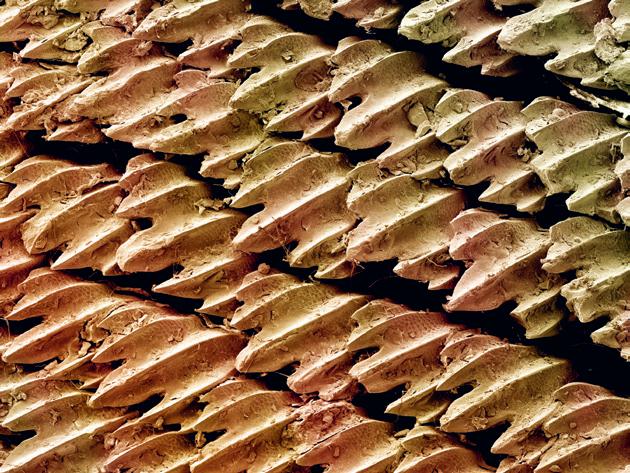
Compare the shapes and sizes of 19 different species of shark – and a human diver – with our fantastic pull-out poster.
Illustrations by Susanna HicklingWHITE-SPOTTED BAMBOO SHARK
Length: O.75 metres. This small shark is harmless to humans and often kept in aquariums.
BASKING SHARK
Length: 1O metres. The second-largest living fish, basking sharks feed on krill and other plankton.
BULL SHARK
Length: 2.5 metres.
Bull sharks migrate from salty oceans to freshwater rivers, swimming upstream to find food.
GREAT WHITE SHARK
Length: 6 metres.
Great white sharks have five rows of more than 3OO jagged teeth.
HUMAN DIVER
Length: 1.75 metres.
ZEBRA SHARK
Length: 3.25 metres.
Zebra shark pups have a pattern like a zebra’s, with yellow stripes on a brown body.
WHALE SHARK
Length: 19 metres. The whale shark is the world’s biggest living fish. Its mouth can contain more than 3OO rows of tiny teeth, each no bigger than the head of a match.
WHITETIP REEF SHARK
Length: 4 metres. The whitetip reef shark lives close to coral reefs and nearby seabeds.
THRESHER SHARK
Length: 6 metres.
The thresher shark uses its long tail fin to round up and stun shoals of fish before eating them.
MAKO SHARK
Length: 4 metres.
Mako sharks attack their prey at great speed from below.
TIGER SHARK
Length: 6 metres.
Young tiger sharks have dark stripes similar to those on a tiger.
GREAT HAMMERHEAD SHARK
Length: 6 metres. The shape of its head helps the hammerhead locate buried stingrays – its favourite prey.
LONGNOSE SAWSHARK
Length: 1.25 metres.
When the longnose sawshark gives birth, its pups’ saw-like teeth are folded against their snouts to stop them harming the mother.
NURSE SHARK
Length: 4.3 metres.
Nurse sharks hunt at night, then return to the same resting place during the day.
FRILLED SHARK
Length: 2m
The frilled shark gets its name from the frilled edges to the slits of its gills.
GOBLIN SHARK
Length: 4.25 metres. This deep-sea shark sucks prey in towards its long, pointy teeth.
IZAK SHARK
Length: 1.2 metres. Living close to the seabed, the izak shark is commonly found in the waters around South Africa.
MEGALODON
Length: 18 metres. This giant shark was one of the largest predators ever to live on Earth. It went extinct at least 3.6 million years ago.
GREENLAND SHARK
Length: 6 metres. Found in freezing Arctic waters, the Greenland shark can live for as long as 2OO years.
ANGEL SHARK
Length: 2 metres. Angel sharks use their flat bodies and camouflaged skin to hide under sand and ambush their prey.
Scale: 2 metres
1 What is a collective name for a group of dolphins?
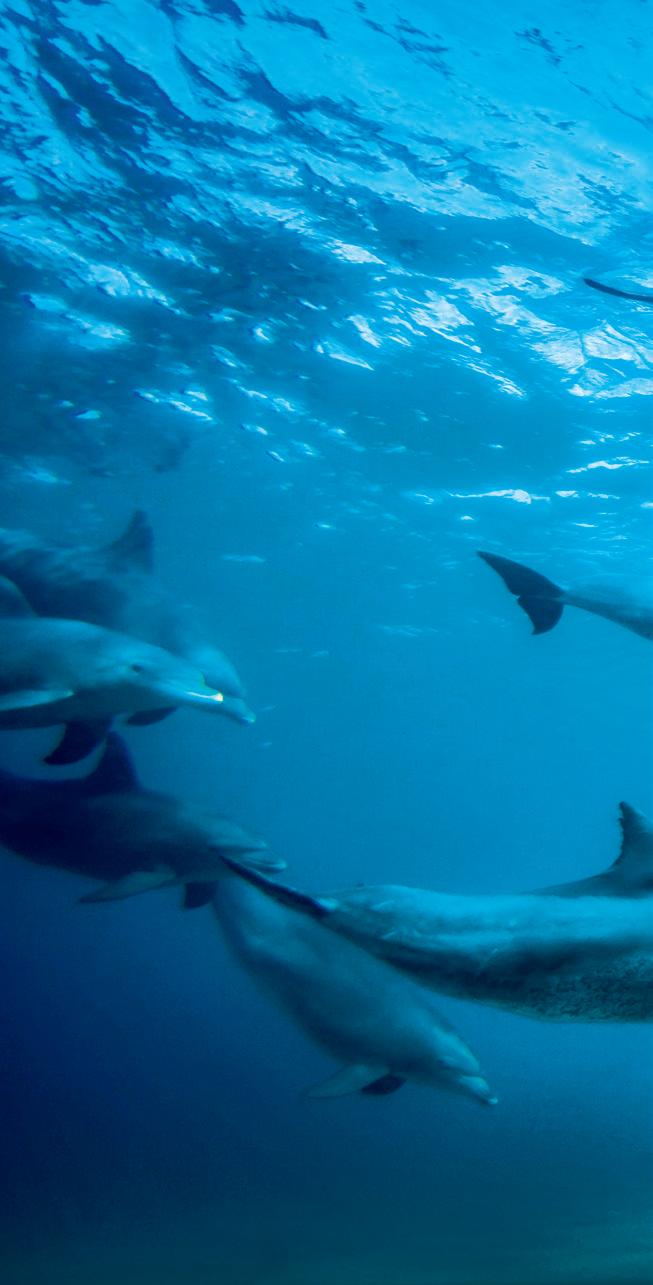
a. A leap
b. A shoal
c. A swim
d. A pod
2 Which is the only insect able to turn its head 180 degrees and look over its shoulder?
a. Grasshopper, pictured
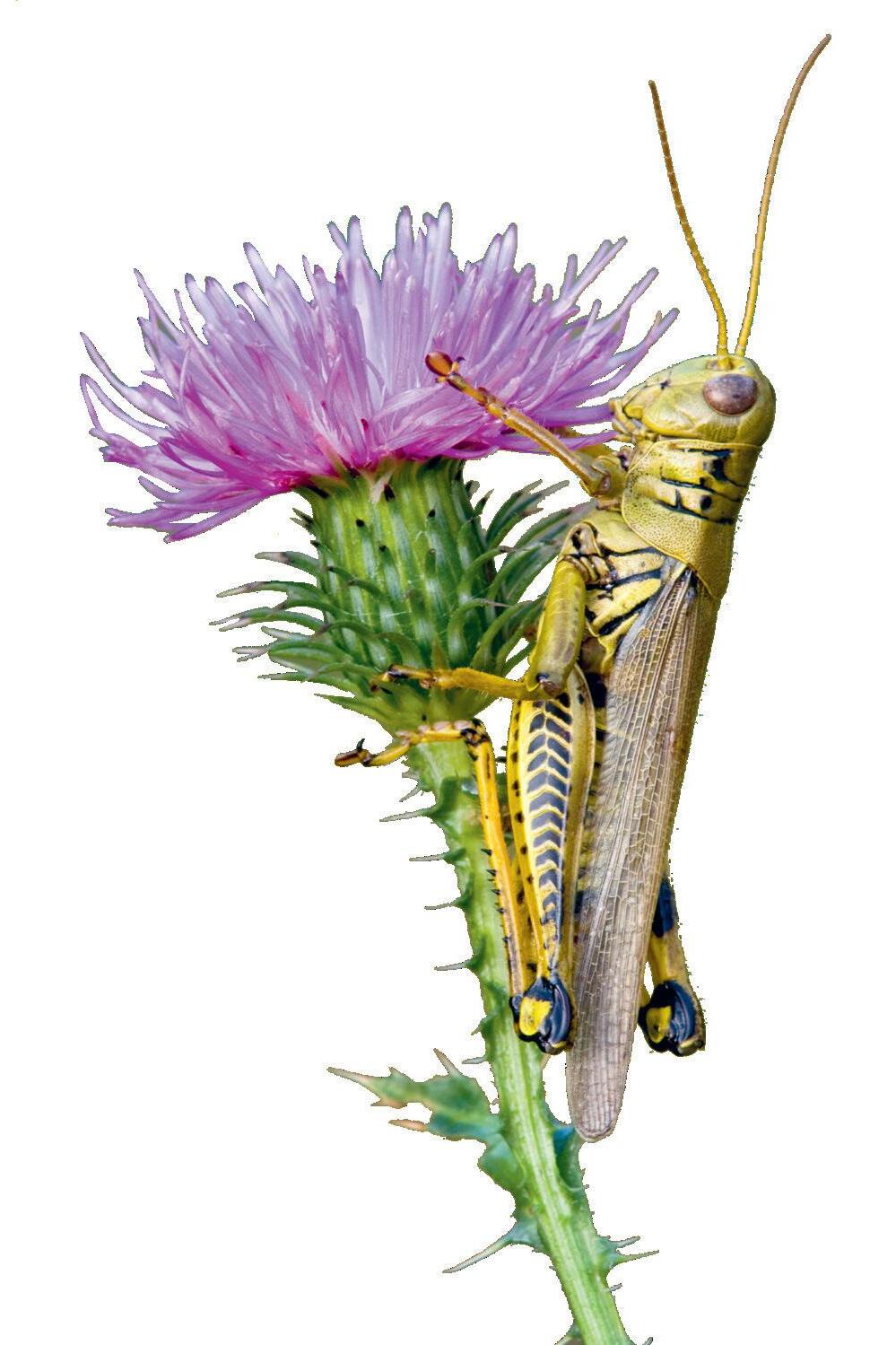
b. Stag beetle
c. Praying mantis
d. Earwig
3 In which range of mountains do snow leopards live?

a. Andes
b. Himalayas
c. Rockies
d. Alps
Test your family’s brainpower by playing this special four-page edition of the Big Britannica Quiz! Regular readers of Britannica Magazine may have an advantage because some of the facts appeared in previous issues of the magazine. Don’t worry if you don’t know them all, though – the answers are at the end of the quiz!
4 Why do pigs roll in mud?
a. To keep cool
b. To keep warm
c. As camouflage
d. To impress other pigs
5 Which is the only species of animal in which the male becomes pregnant and gives birth?
a. Whale
b. Kangaroo
c. Octopus
d. Seahorse
6 A four-legged animal was elected mayor of Lajitas in Texas, USA, in 1986. What type of animal was it?
a. Dog
b. Cat
c. Goat
d. Alligator
7 Which planet in our solar system has the largest number of moons?
a. Neptune
b. Saturn
c. Jupiter
d. Mars
8 Between which two planets in the solar system would you find the Asteroid Belt?
a. Mercury and Venus
b. Mars and Jupiter
c. Jupiter and Saturn
d. Uranus and Neptune
9 Which of the following is NOT one of Earth’s geological layers?
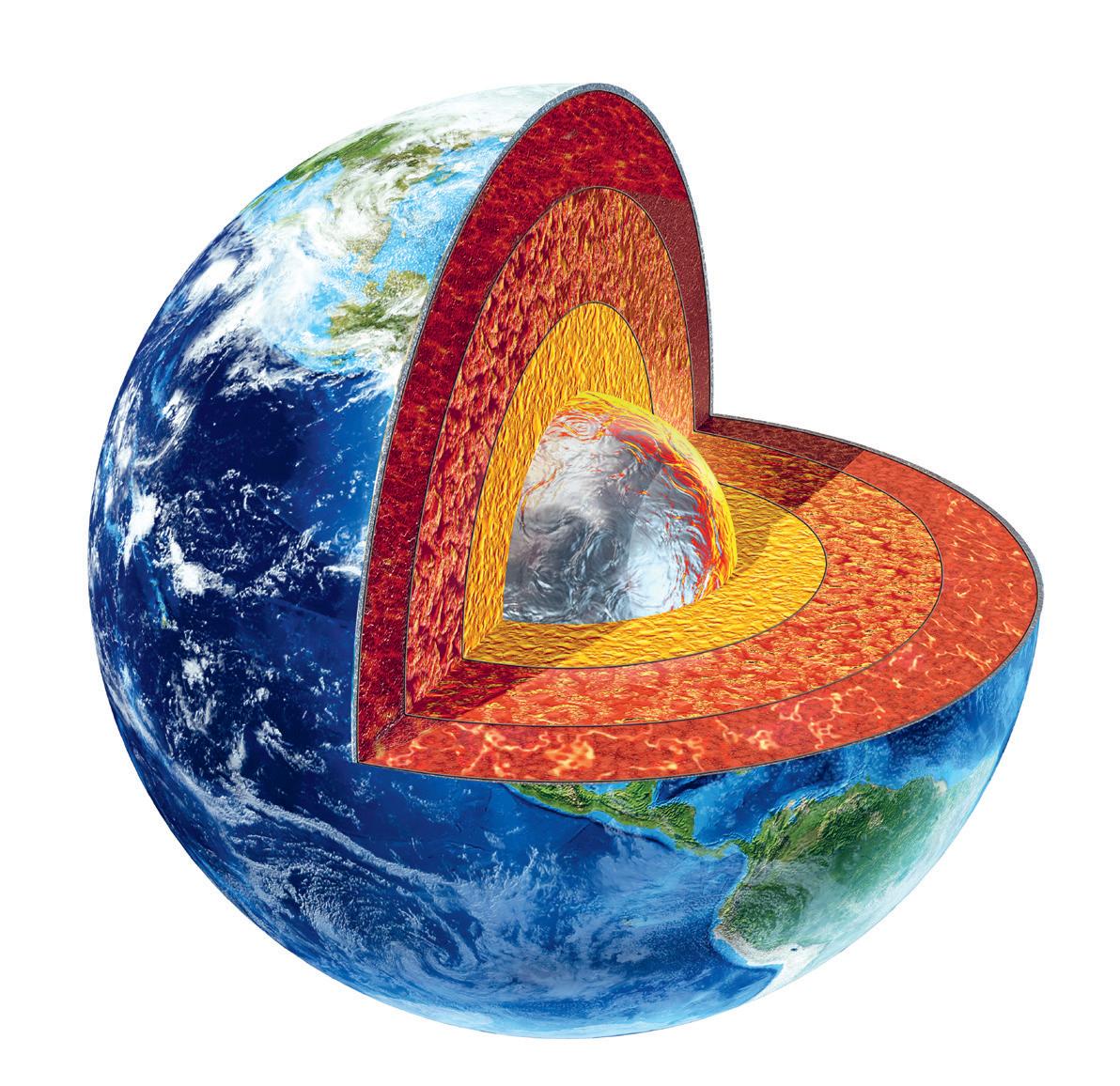
a. Corona
b. Core
c. Crust
d. Mantle
1O
What type of trees lose their leaves in winter?
a. Evergreen
b. Shrubs
c. Deciduous
d. Conifers
11 Which chemical element is diamond made of?
a. Silicon
b. Carbon
c. Titanium
d. Lithium
12
The Richter scale is used to measure what natural phenomenon?
a. Hurricanes

b. Tornados
c. Lightning
d. Earthquakes
13
What is the average core body temperature of a human being?
a. 17°C
b. 27°C
c. 37°C
d. 47°C
14
What is usually the sweatiest part of the body?

a. Foot
b. Hand
c. Armpit
d. Head
Continued from previous page
15 What is alektorophobia a fear of?
a. Cheese
b. Chickens
c. Calculators
d. Cauliflowers
16 How many hairs are there on the average human head?
a. 1,000
b. 10,000
c. 100,000

d. 1,000,000
17 What is the world record for holding a single breath of air?
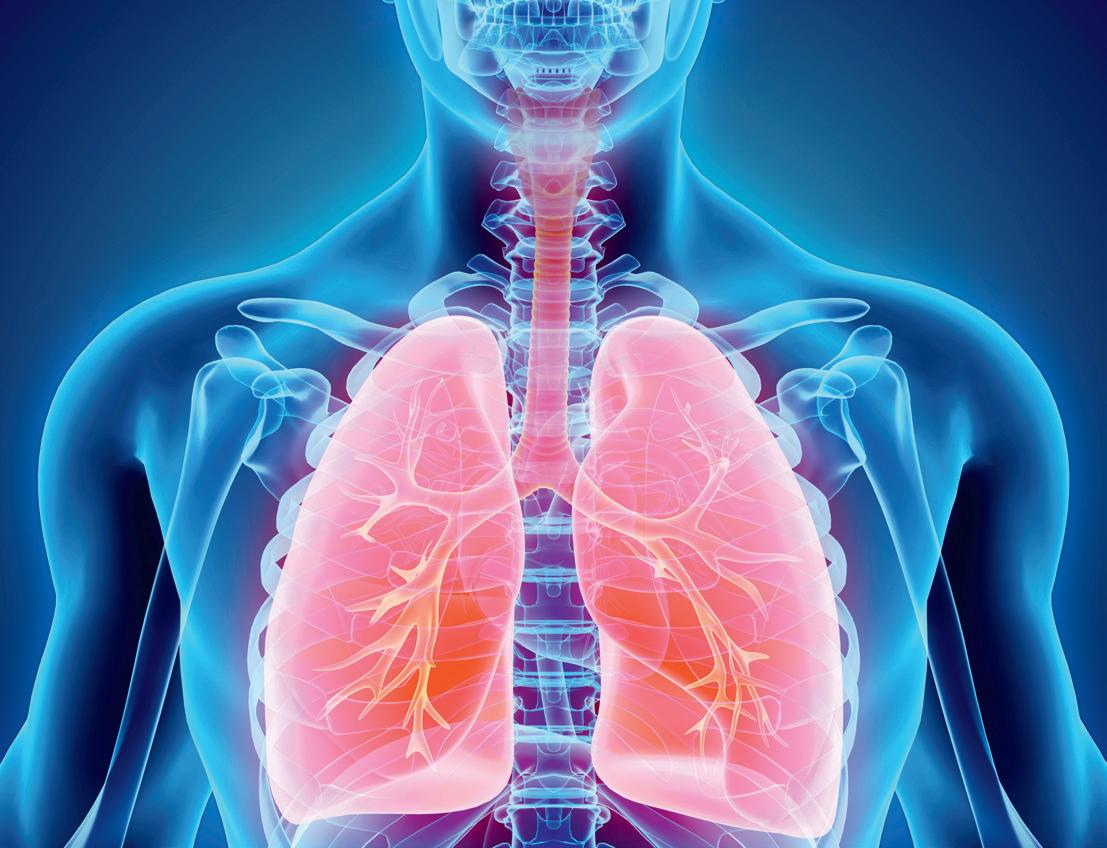
a. 10 minutes
b. 14 minutes
c. 20 minutes
d. 24 minutes
18 Which part of the body automatically closes every time that you sneeze?
a. Ears
b. Mouth
c. Eyes
d. Nose
HUMAN WORLD
19 Which of these human-made materials was invented first?
a. Gunpowder
b. Glass
c. Steel
d. Paper
2O In which country is sumo wrestling the national sport?
a. Turkey
b. India
c. China
d. Japan
21
What is the name of the Simpsons’ elder daughter?

a. Lisa
b. Marge
c. Maggie
d. Patty
22 How many dots are there on a pair of dice?
a. 38
b. 40
c. 41
d. 42
23
What is the most commonly eaten type of food in the world?
a. Pasta
b. Pizza
c. Rice
d. Chicken
24 Ashrita Furman holds the world record for inflating balloons with his nose. How many balloons did Ashrita manage to blow up in just three minutes?
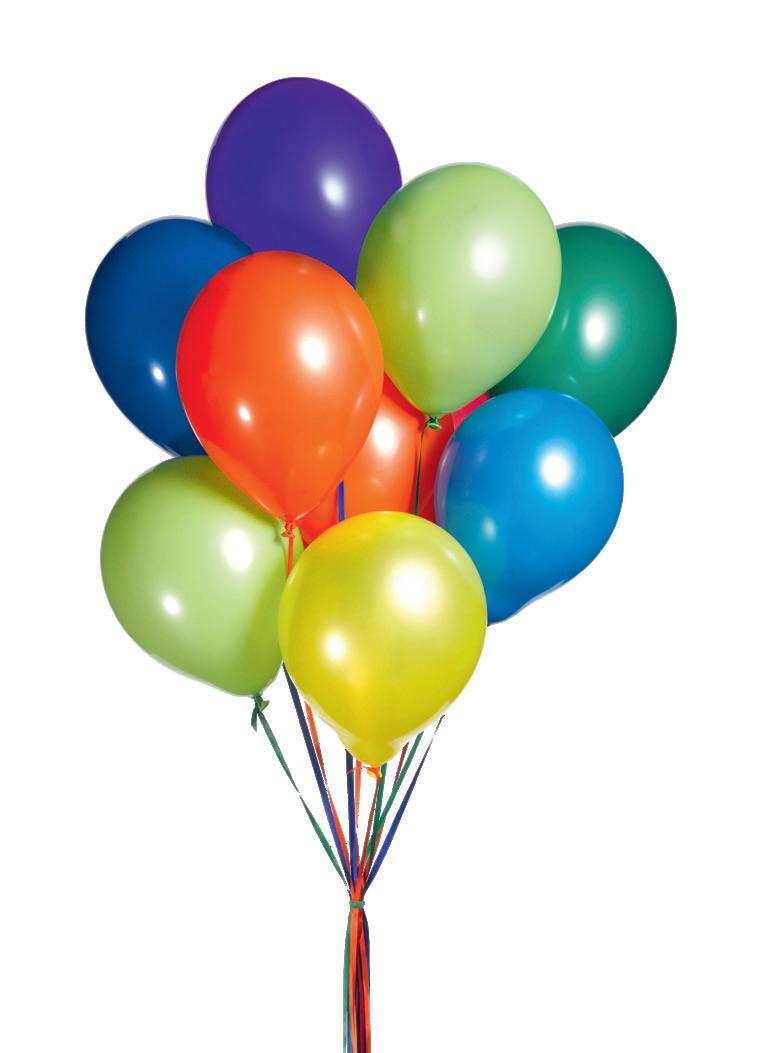
a. 8
b. 18
c. 28
d. 38
GEOGRAPHY
3O
Can you name each of the five famous cities pictured below?




b. Caribbean Sea
c. Sargasso Sea
d. Red Sea
27
What is the largest state in the United States of America?
a. Texas
b. California
c. New Mexico
d. Alaska
25
What is the capital city of India?
a. Beijing
b. New Delhi
c. Karachi
d. Tokyo
28
Which is the only continent that covers four hemispheres?

a. Africa
b. Asia
c. Europe
d. Antarctica
26
Which is the only sea in the world that doesn’t have a coastline (i.e. isn’t bordered on any side by land)?
a. Caspian Sea
29 Which single country contains the largest number of pyramids?

a. Mexico
b. Egypt
c. China
d. Sudan 24
Our planet is changing all the time. Some changes take just a second, while others are so slow we humans barely notice them.
The process of natural selection works very slowly. It usually takes thousands, if not millions, of years for new species to evolve. Today, mammals are an incredibly diverse group of animals, but they all developed from a single group.
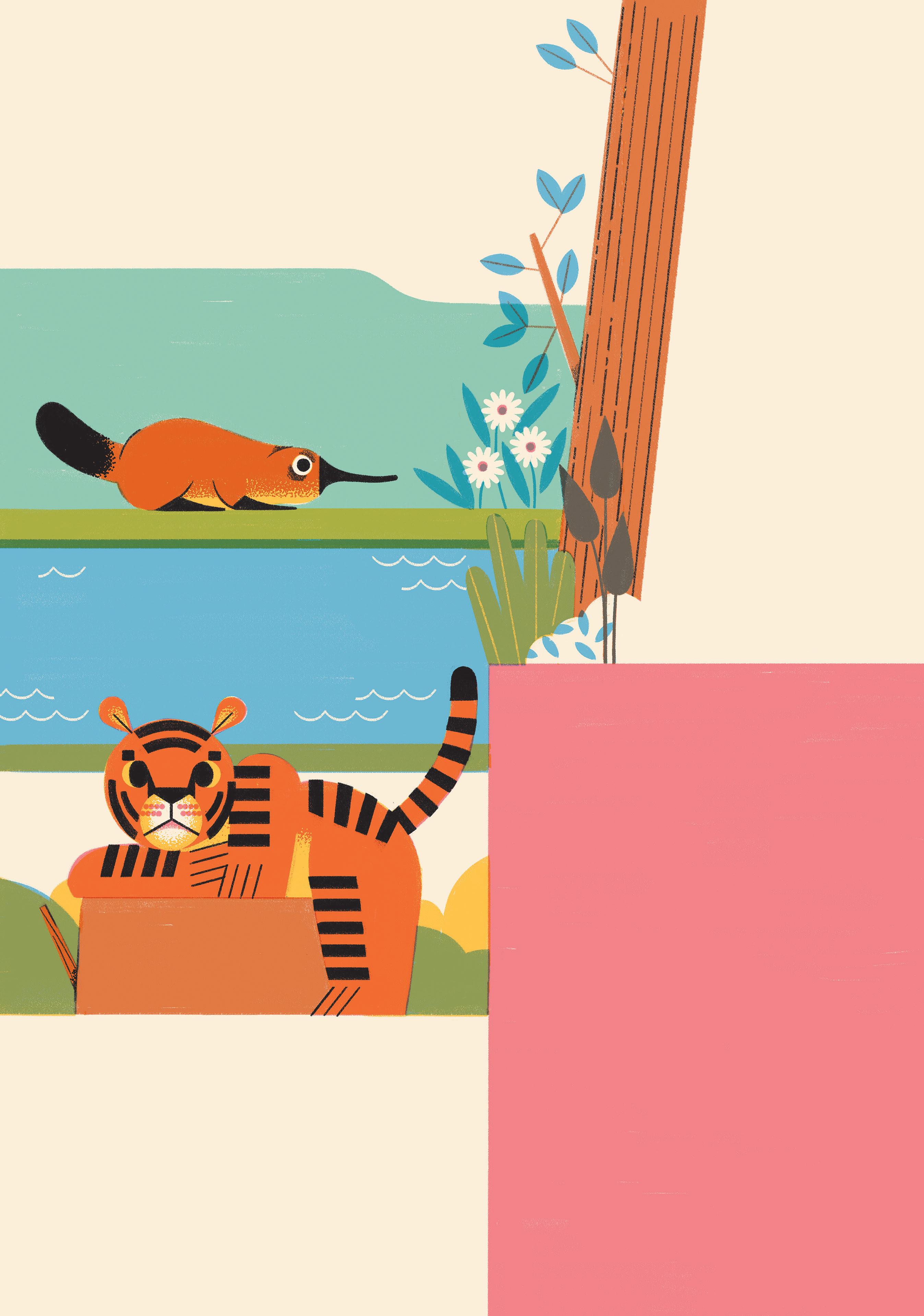
Monotreme Mammals
Scientists believe that the first mammals laid eggs just like reptiles and amphibians. Only two egg-laying mammals are still around today: the platypus and the echidna. These both belong to a group called monotremes and live in Australia.
In 1859, naturalist Charles Darwin published a groundbreaking book now known as On the Origin of Species. In it, he outlined his theory of evolution and explained how different life forms change over time due to a process called natural selection. Here’s how it works. Within a group of living things, some individuals have certain abilities called traits that allow them to survive better than others. As others die off, the survivors pass their more useful traits onto their offspring. Over time, each new generation has slightly different traits to the one before because their environment changes and different traits help them to survive. After a very long time, the group of living things could be so different from the original group that we consider them to be a new species.

How long is a day? Right now it takes Earth slightly less then 24 hours to make one rotation on its axis, but days are getting longer. Scientists estimate that our planet’s rotation is slowing by between 0.0000013 and 0.0000027 seconds per year. That’s a few millionths of a second. This slowing is caused by several factors, including the pull of the Moon’s gravity, water and wind flowing over the planet, and earthquakes. Eventually, Earth’s rotation will have slowed so much that a day will be 25 hours long!

Placental Mammals

Most modern mammals, including humans, are part of a group called placentals, in which the baby fully develops inside the mother. After birth, she feeds the baby and cares for it.
Earth’s Orbit Changes
Earth’s orbit around the Sun is not a perfect circle but is an oval called an ellipse. The shape of this ellipse changes over a 1OO,OOO-year cycle. During this time it goes from oval to almost circular and back to oval again.
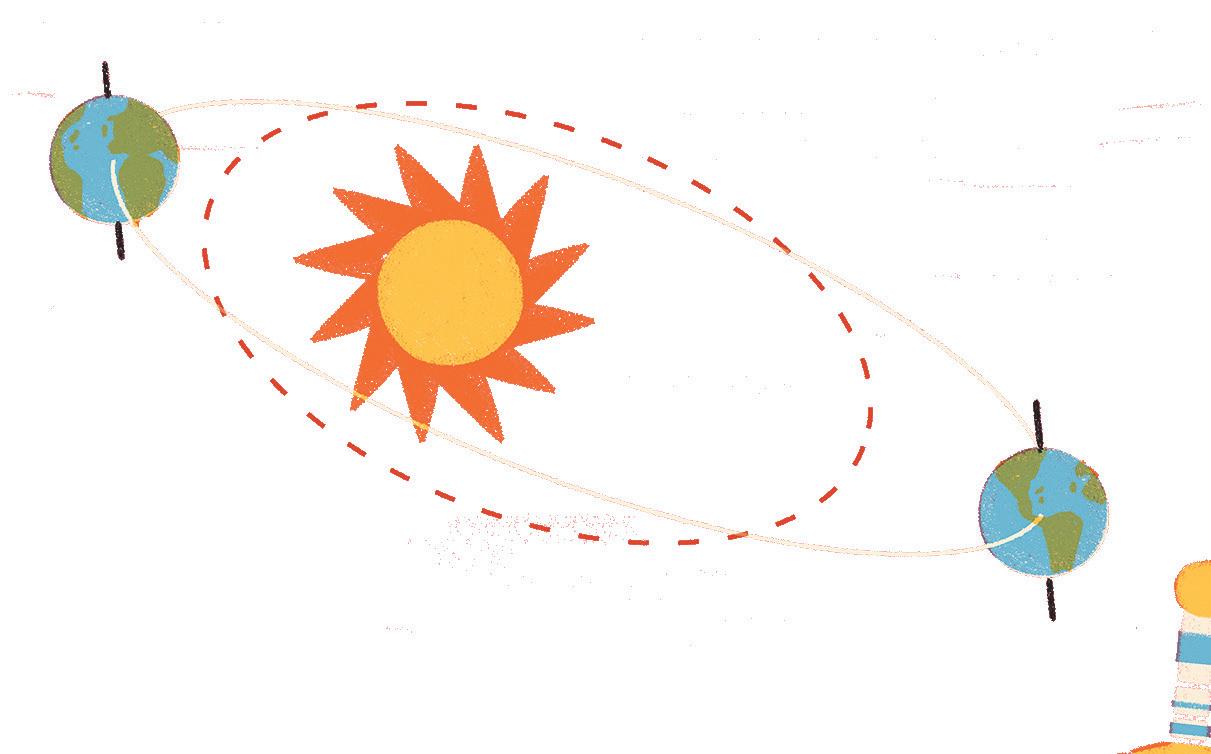

Marsupials, such as kangaroos, are a small group of mammals from an older original group. Among marsupials, the baby does not fully develop until after it is born. Its development takes place in the mother’s special pouch.
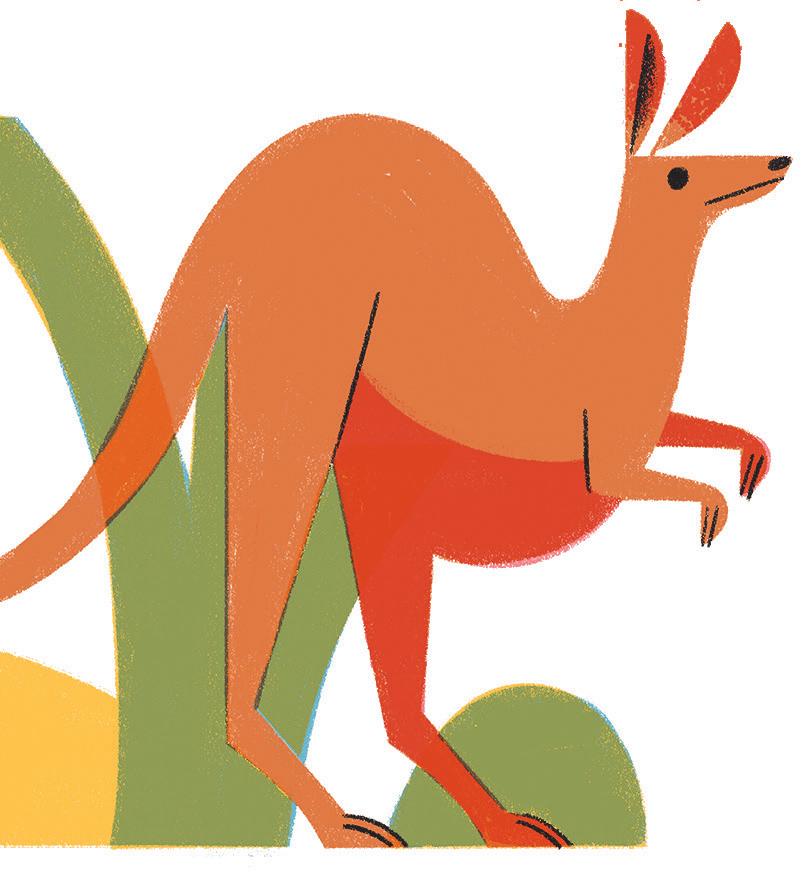
Earth Wobbles
Earth isn’t just spinning on its axis, but the axis is also wobbling to and fro. This is just like how a spinning top wobbles as it slows down. Earth’s axis takes about 26,OOO years to complete one wobble.

If you look at a map of Earth, it almost looks like some of the continents could be fitted together like pieces from a giant jigsaw puzzle. Over the last 100 years, scientists also noticed this and, using data from earthquakes and volcanoes, developed an idea call plate tectonics. This theory says that Earth’s crust is divided into about two dozen giant chunks called tectonic plates. Each plate is slowly moving around the surface. We don’t normally feel this motion because even the fastest plates only move about 10 centimetres per year.

The Himalayas are the highest mountains in the world. They started forming about 5O million years ago when the tectonic plate below India crashed into the Eurasian plate. They are still getting taller every year by about 1 cm.
Earth’s atmosphere is composed of gases, including the oxygen we need to breathe. However, the gases in the atmosphere have changed a great deal over Earth’s lifetime.
Soon after Earth formed, volcanoes released large amounts of carbon dioxide, water vapour and other gases. Unlike today, there was very little oxygen in the atmosphere. Around 3 billion years ago, photosynthetic organisms started using carbon dioxide to make food and replaced it with oxygen. Over time, the atmosphere slowly came to resemble today’s: about 78% nitrogen, 21% oxygen, and only O.O3% carbon dioxide. But over the past 3OO years, the amount of carbon dioxide in the air has been increasing again, partly due to humans burning fossil fuels and cutting down forests.
Water and wind are not solids like rock, but over a long time they can wear it away in a process called erosion. Uluru – also known as Ayers Rock – in Australia sticks up today because about 3OO million years of wind erosion has worn away the softer rock that surrounded it.
When scientists talk about climate, they are talking about the temperature and amount of precipitation that an area gets over a long period of time. Earth’s climate is always changing, but the changes usually happen quite slowly over the course of thousands of years.

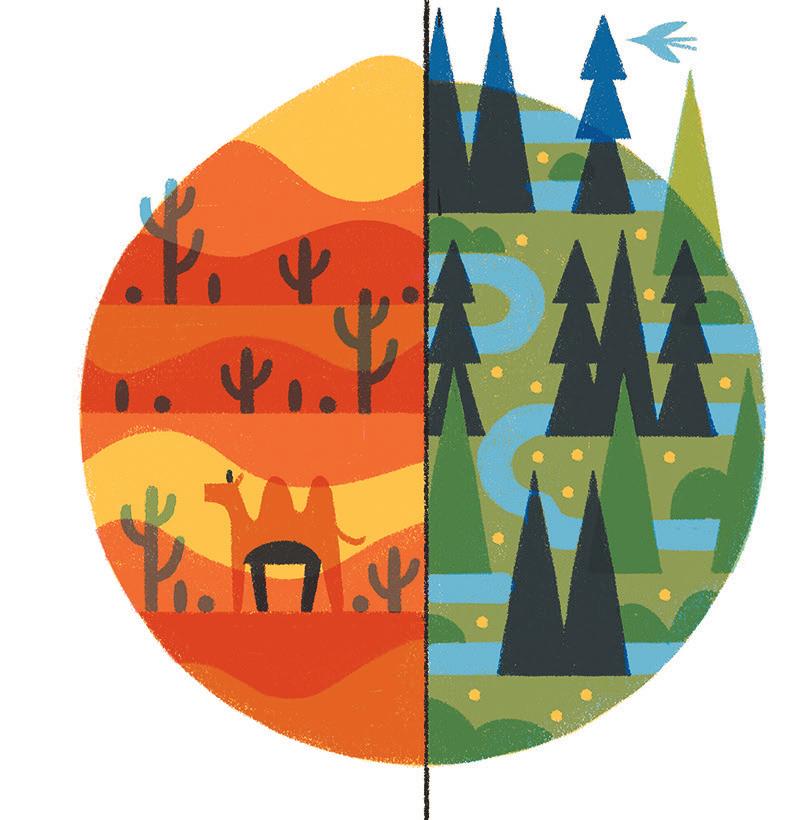

When Earth’s climate gets warmer, water in the ocean expands. Ice in glaciers on land melts and the water flows into the oceans. This causes sea levels to rise. Usually these changes happen over thousands of years but due to global warming, sea levels are rising much faster today.

The atmosphere is a complex mixture of gases. It is mostly made of the elements nitrogen and oxygen. Earth’s atmosphere also contains smaller amounts of more than a dozen other gases, including water vapour.

The amount of water vapour in the air, called humidity, is constantly changing. Scientists use a device called a hygrometer to measure it. The closer the humidity gets to 1OO% the more chance there is of precipitation happening.


Air Pressure
The force of the air pushing against Earth’s surface is called air pressure. It is always changing and scientists measure it with a device called a barometer.
It might seem that Earth’s continents and oceans mostly stay the same, but geological and tidal forces can quickly reshape entire landmasses.
Earthquakes happen when two sections of Earth’s crust suddenly slide past each other. They can occur with little or no warning, destroying buildings, bridges and roads, and creating massive landslides. Scientists measure the strength of an earthquake using a device called a seismograph.

Wind
Winds change direction and speed constantly, but they always blow from areas of high air pressure to areas of low air pressure. Wind speed is measured using a device called an anemometer.
Tides happen twice a day, as the level of the ocean moves up and down. You can see this on a beach from how the water’s edge moves back and forth throughout the day. The tides are caused by tiny shifts in the Moon’s and Sun’s gravitational pull on the Earth’s surface.
Volcanoes are openings in Earth’s crust where melted rock called magma moves up from below and then flows onto the surface as lava and ash, creating new land. Scientists estimate that there are about 1,5OO potentially active volcanoes on Earth right now. About 5OO are recorded as having erupted during Earth’s recent history.
Wherever you look in the universe, change is happening. Here are some important changes that are taking place on – or around – planet Earth each and every day…
The position and movement of objects in space can have a surprising effect on Earth.
Sunrise and sunset each day are caused by Earth spinning on its axis. When your part of the Earth faces the Sun it is day. When your part faces away from the Sun, it is night.

Throughout each month, the Moon appears to change shape from a thin crescent to a full circle and back again. This is the lunar phase cycle and it takes 29.5 days to complete. It happens because we see different amounts of the lit-up side of the Moon as it orbits the Earth.

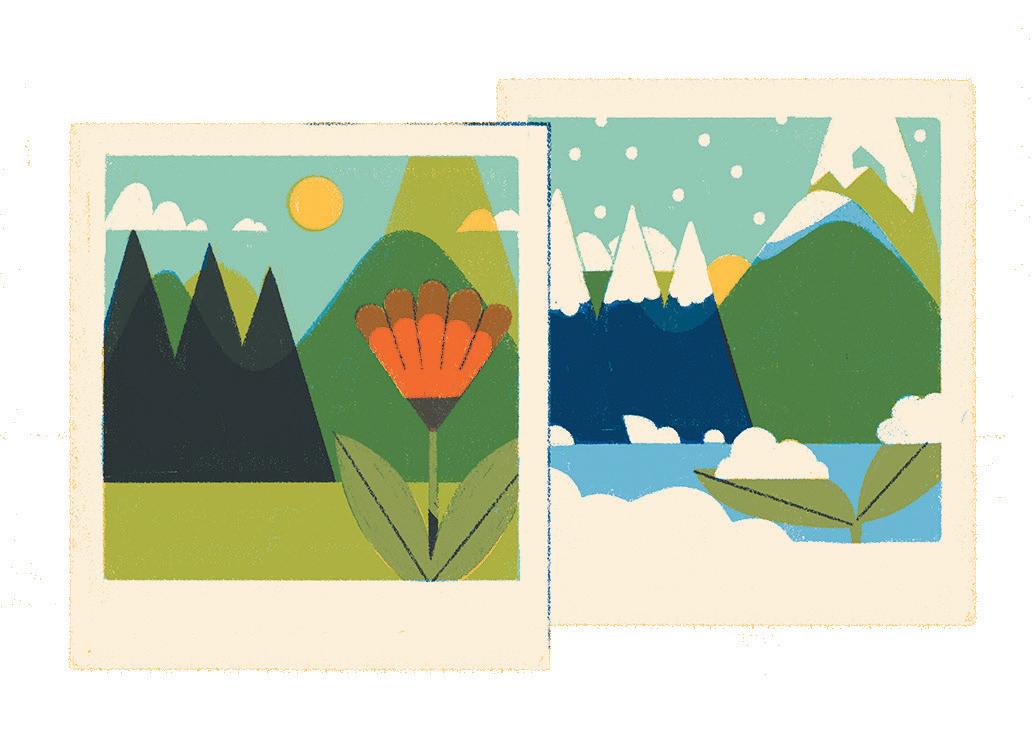
If you’re a careful observer and don’t live near the equator, you can see that the Sun’s path across the sky changes a bit each day. This happens because the Earth is tilted on its axis. As the Earth moves around its orbit, the direct light from the Sun is focused on a slightly different place on Earth each day. This change creates the seasons. It’s also why the number of minutes of daylight changes each day.

All animals, including humans, go through a series of changes throughout their lifetimes called a life cycle.
When we are first born, we are helpless babies that require lots of care. By the time we are about 2 years old, we can walk and talk. Not long after, we change from toddlers into rapidly growing children. When we become teenagers, we reach adolescence and go through more changes until we reach adulthood.

When you look at the night sky, you will see lots of bright dots. Most of these are stars, but some of the really bright ones are planets. Over time the stars will move across the night sky in a particular pattern. While their location in the sky changes, their pattern doesn’t. But the planets don’t follow the same pattern as the stars, they can speed up, slow down and even appear to move backwards.
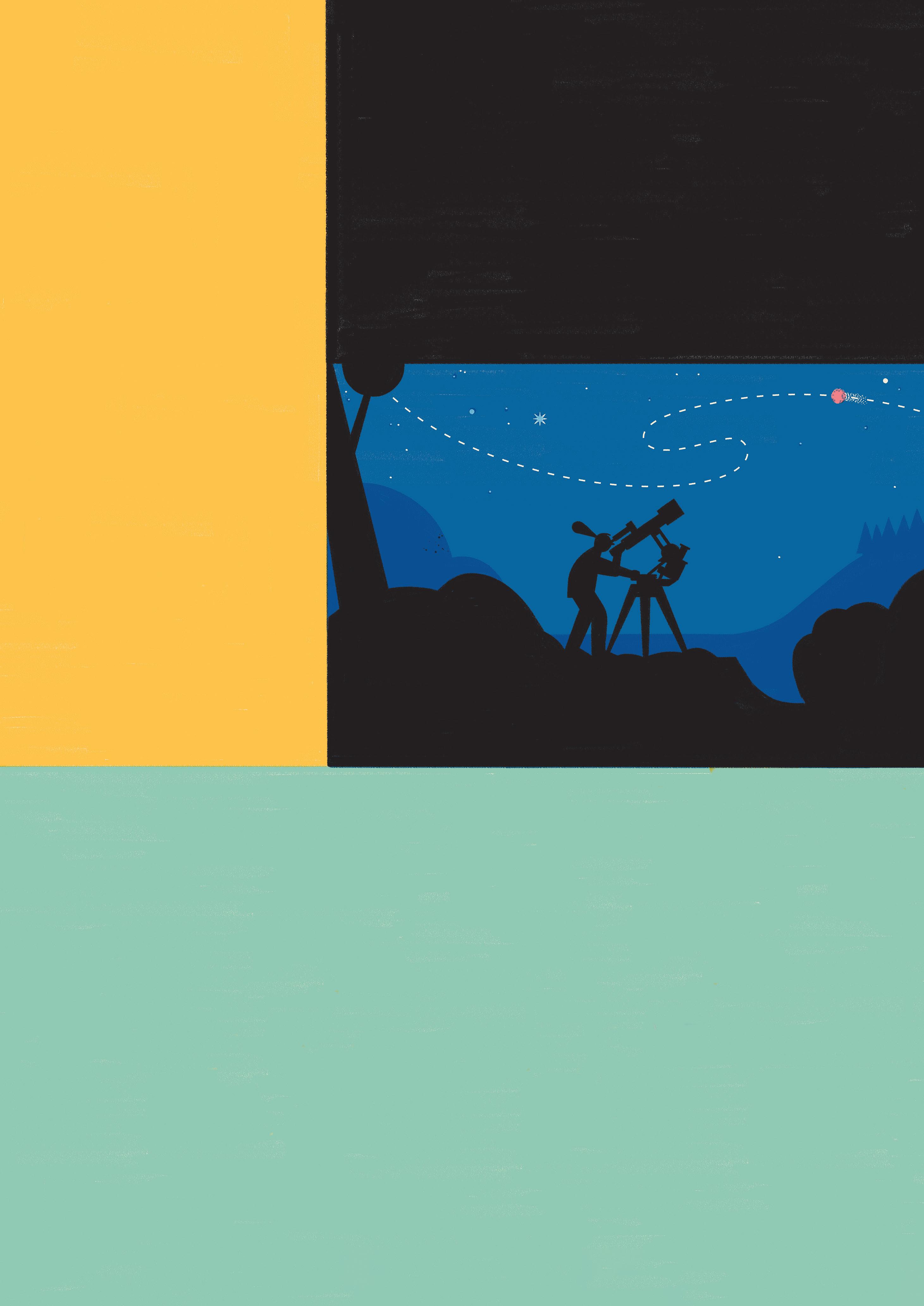
Butterflies and all other insects also go through big changes over the course of their lives. This process is called metamorphosis. After they hatch from eggs, the babies, called larvae, take the form of a caterpillar. Next, during the pupa stage, the caterpillar creates a covering around itself called a chrysalis. Eventually it emerges from its chrysalis as an adult butterfly.

Frogs
Frogs, like butterflies, go through a type of metamorphosis. After hatching from eggs in water, they become tadpoles which look like little fish. As they mature, they grow legs, lose their tails and change into adult frogs.
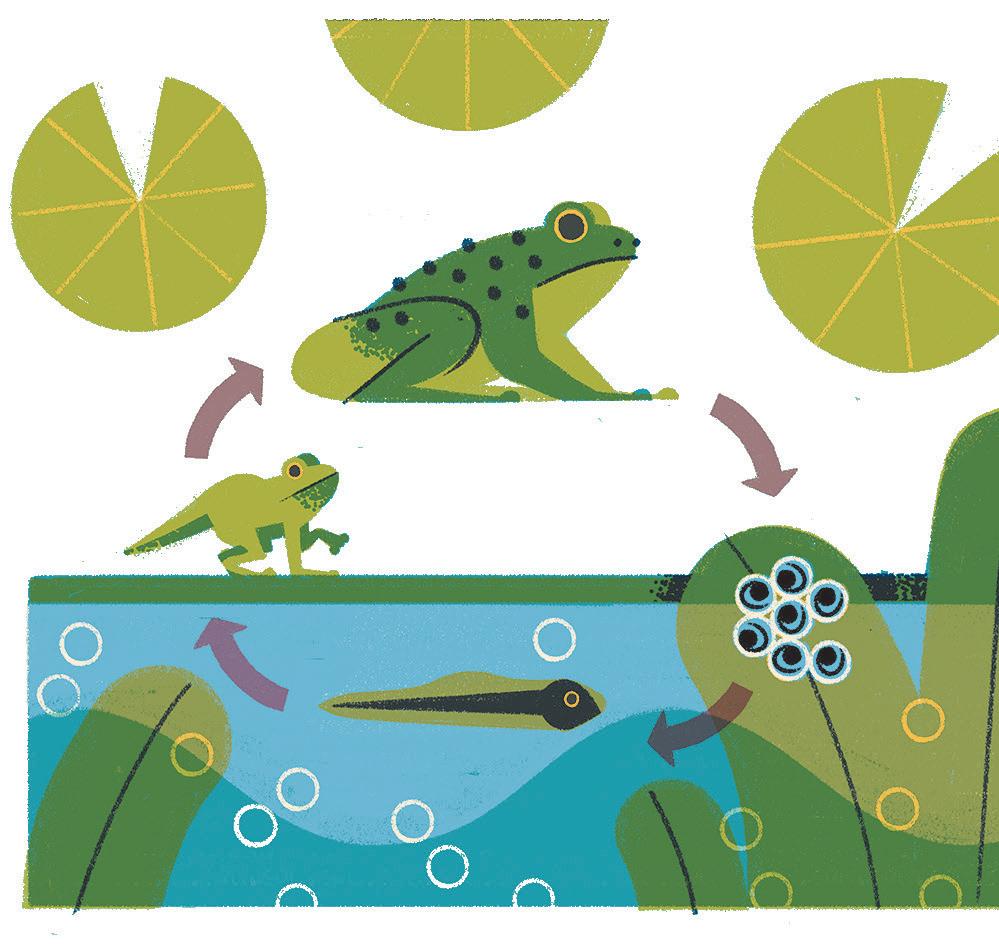
Prepare to be amazed (and amused!) by the unusual facts crammed into these irresistible lists.
Eleven people who came second
1 The Egyptian pharaoh Khafre built the second-tallest pyramid (about 2530 BCE).
2 English seaman Sir Francis Drake was the second person to sail around the world on a single expedition (1577 to 1580).
3 British tennis player Charlotte Cooper was the second woman to win an Olympic gold medal (11 July 1900).
4 British explorer Robert Falcon Scott led the second team of adventurers to reach the South Pole (17 January 1912).*

5 American aviator Amelia Earhart, pictured in the main photo above, was the second person to fly solo across the Atlantic Ocean (22 May 1932).**

6 American athlete Jesse Owens, pictured right, was the second track-and-field athlete to win four gold medals at one Olympic Games (in Berlin in August 1936).***
7
Australian John Landy was the second person to run a mile in under 4 minutes (21 June 1954), just a month after Britain’s Roger Bannister did it first.
8
Swiss mountaineers Ernst Schmied and Jürg Marmet were the second team of climbers to reach the summit of Mount Everest (23 May 1956). The first people to climb Everest were Edmund Hillary and Tenzing Norgay, on 29 May 1953.
9
American scientist Linus Pauling was the second person to win two Nobel Prizes (for Chemistry in 1954 and Peace in 1962).****
1O
American astronaut Buzz Aldrin was the second person to walk on the Moon (20 July 1969).*****
Norwegian flag flying at the top: Amundsen had beaten them to it by 34 days.
**Earhart later became the first person to fly solo across the Pacific Ocean from the island of Hawaii to the US mainland (11-12 January 1935).

***Owens also achieved a unique sporting feat by setting three world records (in the long jump, 200-metre sprint and 200 metre hurdles) and equalling another (in the 100-yard dash) in just 45 minutes at an athletics event in Michigan, USA, on 25 May 1935.

****The first-ever person to win two Nobel Prizes was the Polish scientist Marie Curie, who won prizes in Physics (1903) and Chemistry (1911).
Some of the fastest – and slowest –dinosaurs that lived on land
Scientists use a combination of the size, weight, muscle strength and fossilised footprints of a dinosaur to estimate how quickly it could run.*
Compsognathus

4O mph (64 km/h)
Gallimimus
31 mph (5O km/h)
Velociraptor
25 mph (4O km/h)
Allosaurus
21 mph (34 km/h)
Tyrannosaurus rex
18 mph (29 km/h)
Triceratops
16 mph (26 km/h)
Diplodocus
15 mph (24 km/h)
Brachiosaurus
6.2 mph (1O km/h)
Ankylosaurus
6 mph (9.7 km/h)
Euoplocephalus
5 mph (8 km/h)
Stegosaurus
4 mph (6 km/h)
Russian cosmonaut Svetlana Savitskaya, pictured above, was the second woman to go into space (19 August 1982).
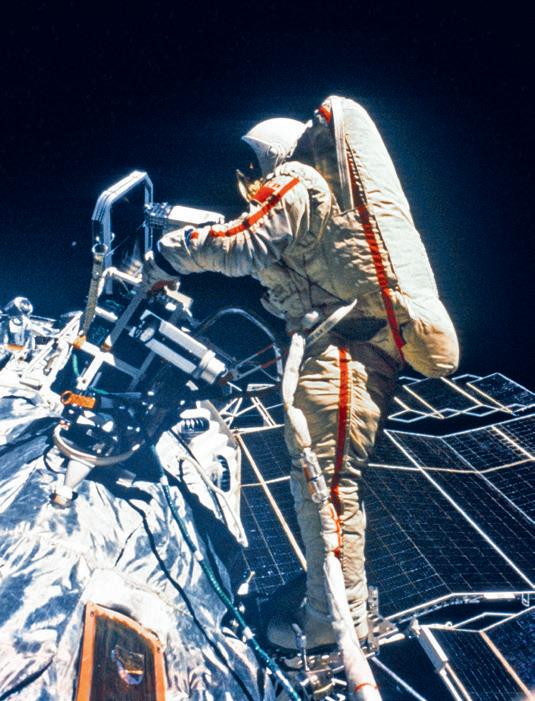
11
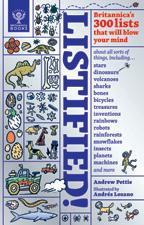
*Scott and his team had been racing a rival Antarctic expedition led by the Norwegian explorer Roald Amundsen. When they finally reached the South Pole, Scott’s team found a tent with a
*****American astronaut Neil Armstrong was the first human to walk on the Moon. Here’s what Aldrin had to say about following in Armstrong’s more famous footsteps: ‘As the senior crew member, it was appropriate for him to be the first. But after years and years of being asked to speak to a group of people and then be introduced as the second man on the Moon, it does get little frustrating.’
Argentinosaurus

3 mph (5 km/h)
*The sprinter Usain Bolt’s fastest recorded running speed is around 27 miles per hour (44 km/h). The average human walking speed is around 2.5–3 miles per hour (4–5 km/h) so, if it were alive today, an Argentinosaurus could easily stroll alongside us.
Listified! by Andrew Pettie and illustrated by Andrés Lozano is out now. Stegosaurus CompsognathusStumped? Don’t worry, you can find the answers to all the puzzles on page 49.

Can you spot the names of 25 countries hidden in our jumbo word search puzzle? Good luck!
In the triangles below, the numbers inside the squares are the sum of the two numbers in the connected circles. For example:
Can you work out which number should appear in each of the circles?
All the numbers in the circles are between 1 and 9 and a number can only be used once in each triangle.
Can you spot all 2O differences between these two inventive illustrations?
Use the word wheel to help find the answers to the six clues below. All the answers contain the middle letter, and each letter can only be used once.
Clue: a fairy tale, Jack and the _________ (9 letters).
Answer:
Clue: a large piece of material often used as a covering on a bed (7 letters).
Answer:
K E A S A
Clue: a building used to keep horses (6 letters).
Answer:
Clue: not present or missing (6 letters).
Answer:
Clue: a book of maps or charts (5 letters).
Answer:
Clue: a long reptile with no arms or legs (5 letters).
Answer:
Can you find your way through our maze of square rooms? Enter through the door marked with the red arrow, then try to find your way to the exit by going through the correct sequence of open doors. Good luck!

Fill in the missing numbers so that every row and column includes the numbers 1, 2, 3 and 4. Use the inequality signs as clues and make sure numbers always obey the inequality sign between them. This means that the arrows between the numbers always point towards the smaller number.
Here is an example:

In the three squares shown above, the number A must be less than 3 and greater than the missing number B.

We know all the numbers must be between 1 and 4 , so therefore A must be 2 and B must be 1.





Draw bridges between the red islands so that the number of bridges connected to each island equals the number written inside the circle.
Rules:
1. The bridges must be straight lines and cannot bend.
2. The bridges cannot intersect with each other.
3. The bridges can be horizontal or vertical but not diagonal.
4. The maximum number of bridges connecting two islands is two.
Draw a line to connect each pair of planets. You can’t use diagonal lines and the lines can’t cross or touch each other. You must fill the whole grid with lines but only one line is allowed in each square.
Fill all the empty squares so that every row, column and 3x2 box contains each of the numbers 1 to 6.

The great French artist Henri Matisse is famous for creating collages out of coloured paper. Here’s how you can make one too!
Do you like to cut out pieces of paper to make a collage? Well, you are in very good company because so did Henri Matisse, pictured above, who is thought by many people to be one of the greatest artists of all time!
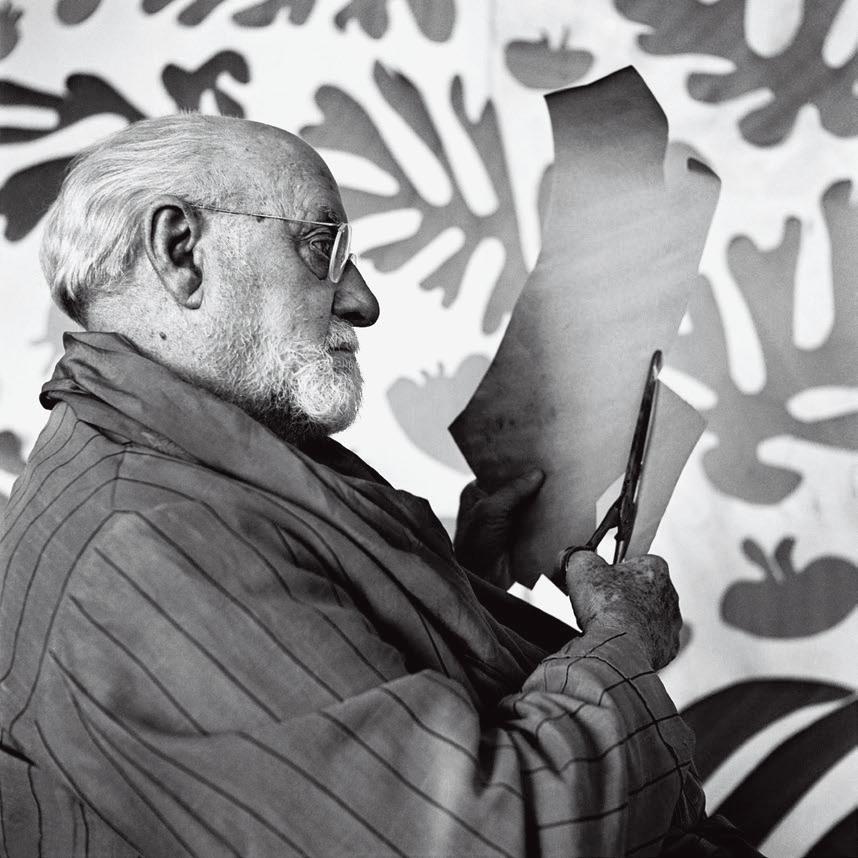
Matisse was born in the north of France in 1869. At the age of 20, he unfortunately developed a painful medical condition called appendicitis, so his mother bought him some art supplies to give him something to do while he recovered. From that moment, Matisse fell in love with art and decided he would become a painter. During his long career, Matisse painted many great works of art and became known for his free use of form and colour.
Later in his life, as Matisse’s eyesight began to fail, he found it difficult to create detailed paintings with the precision he had done as a younger man. So he started to experiment with what became known as his ‘cut-outs’. To create them, Matisse would cut out shapes of coloured paper and arrange them into eye-catching collages. He published a book of these cut-outs called Jazz that was very popular. Today, they are on display in art galleries around the world and as prints and posters in thousands of people’s homes.
Would you like to create a cut-out just like Matisse? Then follow the simple instructions on the opposite page to find out how it’s done!
Top Tip
Choose an animal with a recognisable shape, such as a turtle or snake.
Matisse often sketched snails from nature, after closely observing the spiral shape and many colours of their shells. (The sketch above is one that we created.) Inspired by these drawings, Matisse painted colours on paper and then cut the paper into geometric shapes to create a simple, colourful representation of the animal.
1
Start with a sketch of your chosen animal or other subject. Drawing a sketch will help you break the picture down into simple shapes and key colours when you go on to make your collage. We chose a seahorse because of its spiral body and defined shape.
Scissors
2
Pencils & felt-tip pens
Overlay your sketch with tracing paper and draw the geometric shapes you want to emphasise. Using tracing paper means you can experiment until you are happy with the result.
3
Pick the colours you want to use for your collage. Try using complementary colours, as shown in the colour wheel above. We chose a blue/green border to look like the ocean. You can use coloured paper, or paint colours onto thick white paper yourself, leaving it to dry.
‘The Snail’ by Henri Matisse, shown on the opposite page, uses pairs of complementary colours (red/green, orange/blue, yellow/violet). Can you match the colours in Matisse’s picture to this colour wheel? Which colours would you choose?
Top Tip
Try copying humanmade shapes such as Stonehenge or the Eiffel Tower!
4
Cut the shapes out and lay them onto your background. You can still make adjustments if you change your mind about the colours or the shape. Once you're happy with the composition, glue all the pieces in place. Your work of art is ready to share with the world! Why not send us a photo of it? We would love to see it!
Each month we feature an amazing story from world history taken from the bestselling book by Christopher Lloyd, with illustrations by Andy Forshaw. This month: fossils and life in the ancient oceans!
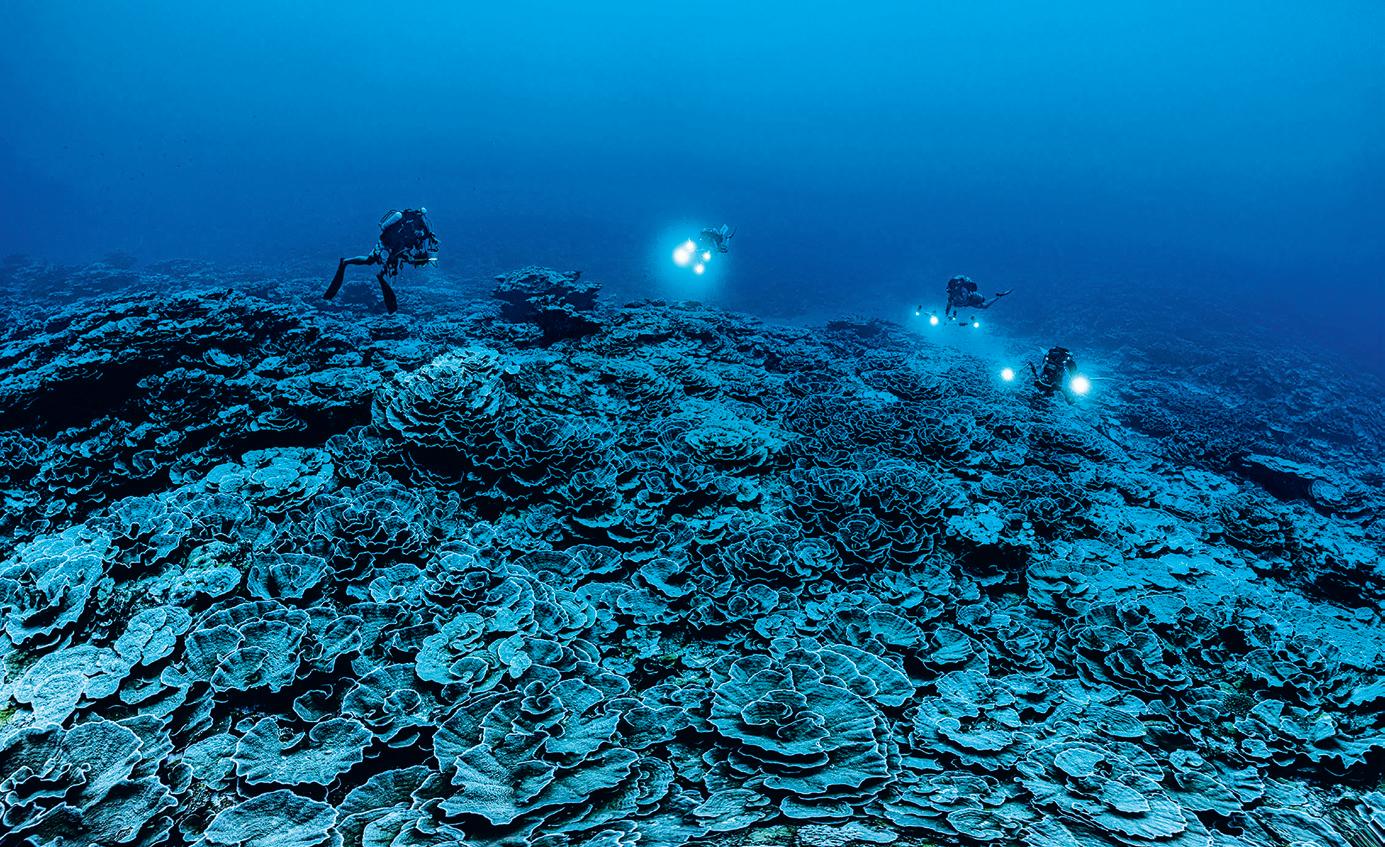
Fossils are the preserved remains of long-lost creatures or the impressions they left behind. When creatures die, usually their bodies rot or dissolve. Sometimes, though, minerals in the ground replace onceliving cells, creating a fossil. The same thing can happen to shells or teeth or footprints. Fossils are wonderful for helping scientists understand what kinds of creatures once lived on Earth. Expert fossil hunters are called palaeontologists.
Charles Doolittle Walcott loved finding fossils. He was born in New York Mills, New York, USA, in 1850. As a young boy he found school quite boring. It wasn’t that he had no interest in things, just the opposite. He was so curious that he wanted to get outside and explore the world for himself – in particular, he liked to look for minerals, rocks, birds’ eggs and fossils. When he grew up he became the head of the Smithsonian Institution, a part of the US government that studies the world and teaches people about it.
One day in 1909, Walcott was exploring high up in a remote part of the Canadian Rockies. According to legend, his horse slipped and lost a shoe. Then, as the creature stumbled, its foot turned over a glistening rock. Walcott picked it up and saw a row of remarkable silvery fossils. These showed
the perfectly preserved shapes of creatures dating back to a time known as the Cambrian Period.

Remember how the land is always moving and changing? Well, it turned out that the mountainside Walcott was standing on had been on the sea floor 508 million years before. Way back then, something – maybe a mudslide – killed these creatures and preserved them like a time capsule. Walcott’s fossils are some of the oldest ever found. The place where he found them is known as the Burgess Shale, named after nearby Mount Burgess. Walcott returned to the site many times and eventually wrote a whole shelf of books about his finds.
And what a bizarre range of creatures they were! There was the strange-looking Anomalocaris. Possibly the

biggest hunter of its day, it could grow up to 1 metre long. It used a pair of grasping arms to capture prey.
Another was Hallucigenia
This little beast walked on tentacle-like legs. It used the spines on its back to protect itself from being eaten by predators.
But nothing can prepare you for Opabinia. This oceanic oddball had five eyes, a fan-like tail for swimming, and a long nose with a mouth on the end. There’s nothing remotely like it alive today.
One of the Cambrian Period’s most common forms of animal life was a group of sea creatures called trilobites. Their fossils range from the size of your thumb to 0.75 metres long and have been found all over the world.
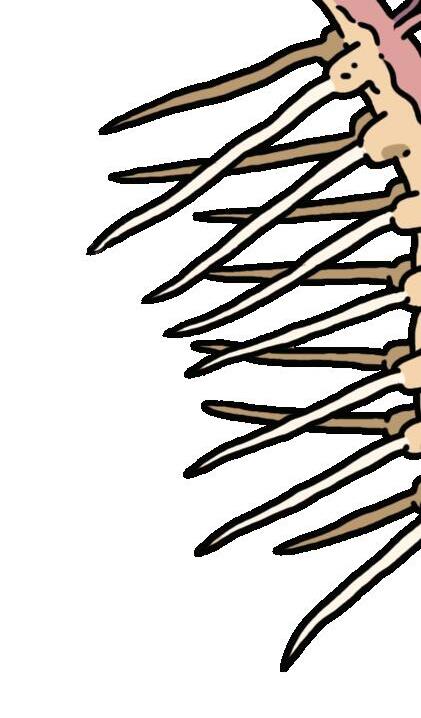
Continued on next page

TrilobiteTrilobiteswerearthropodswith heavilyarmour-platedbodiesand eyeswithlensesmadeofthemineral calcite.Somescientiststhinkthey couldhavebeenthefirstcreatures evertohavedevelopedeyes!

Anomalocaris
Thisgiant1-metre-longarthropod wasatoppredatorintheCambrian seas.Ithadcompoundeyes,made upofseveralsmallereyes,andtwo jointed,arm-likeappendagesused forgrabbingitsprey.
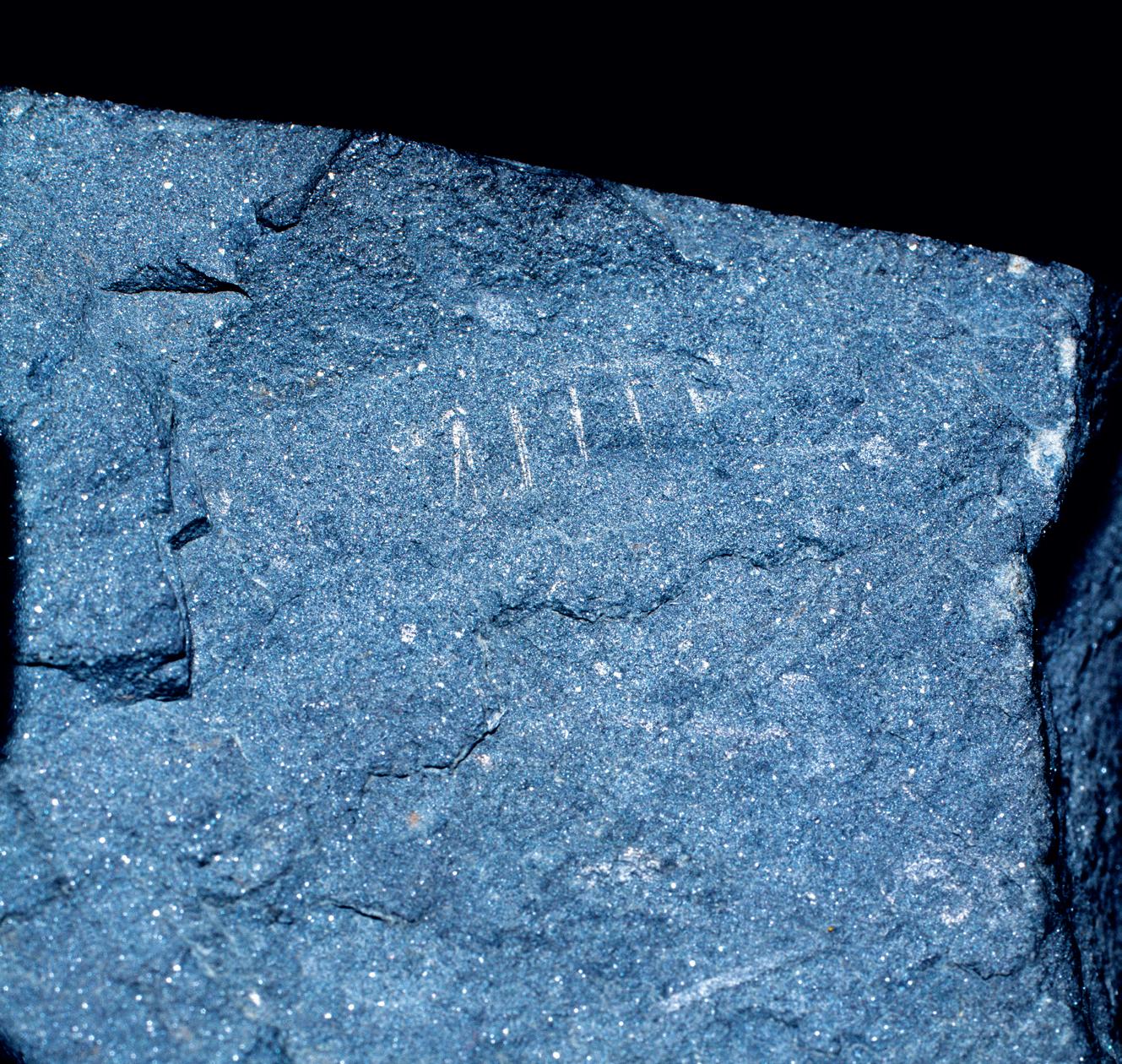


Hallucigenia

Thislong,worm-likecreature whichcrawledalongthebottom oftheoceanhadpointylegsand sharpspinesonitsbacktoprotect itfromattackfromabove.
Opabinia


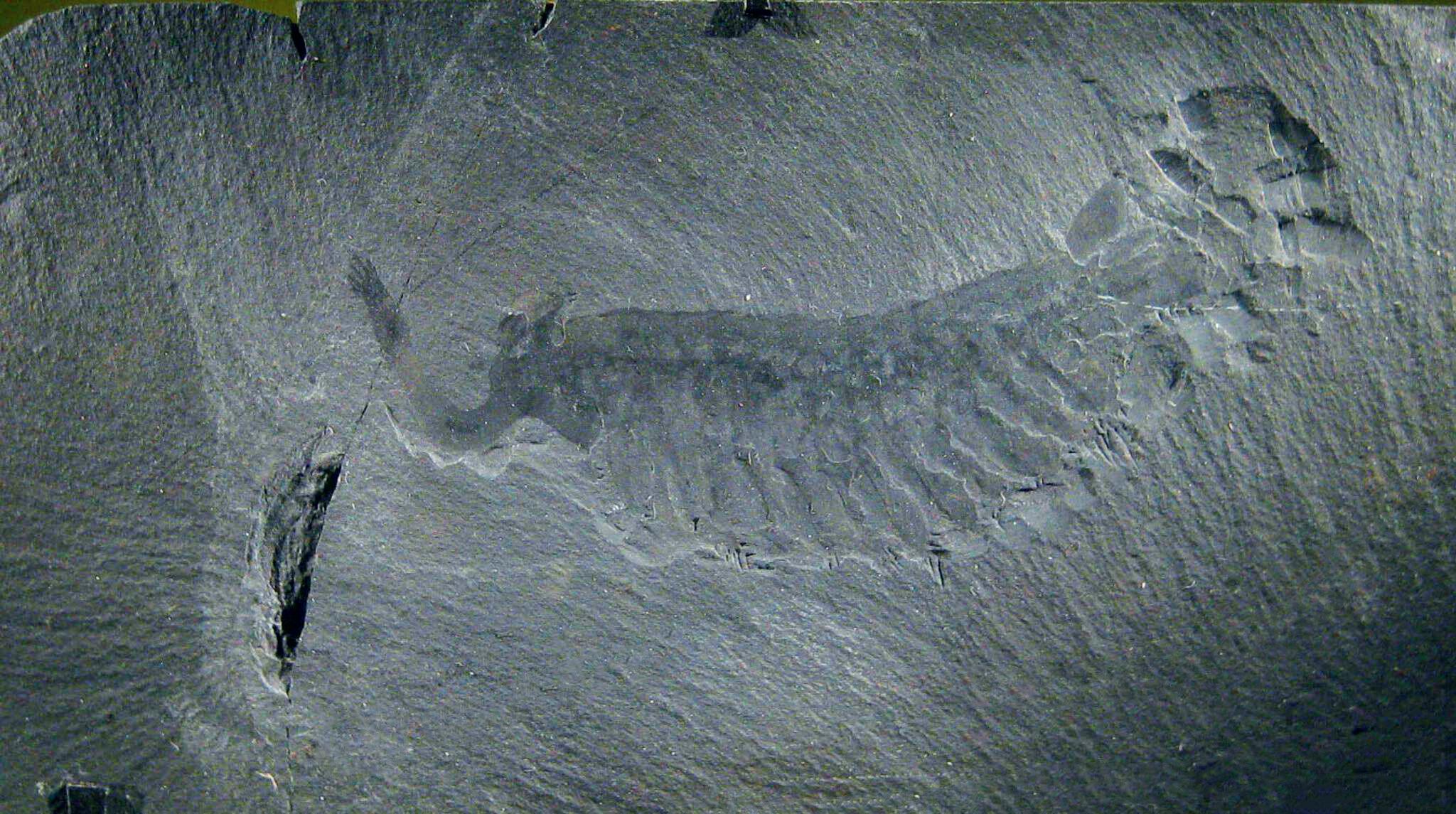
Oneofthemostbizarrelifeforms toemergeintheCambrianPeriod was Opabinia,a6-cm-longmarinecreaturethathadfiveeyeson stalksandagraspingproboscis forpassingfoodintoitsmouth.

Continued from previous page
One very important thing about them is that they were possibly the first creatures ever to have fully developed eyes.
Some experts think that trilobite eyes triggered a new race for survival in the ancient seas. They could choose what they wanted for dinner by looking around.
Over time, many living things developed and later died out. Looking at fossils and the rocks they’re embedded in helps scientists figure out when each one lived. The chart on the opposite page shows time from the formation of Earth to the present day.

Of course, creatures that were easy to see were the ones most likely to be dinner. Hiding underground or being the same colours as the sea floor would have been good ways to survive in this brave new world. This is a great example of how evolution works, how new, better-adapted creatures replace earlier ones over time.
The Burgess Shale creatures give us a glimpse into the very beginning of a time called the Palaeozoic Era. Let’s go on an imaginary ocean dive to check out some creatures that lived in the first part of this era, during periods called Cambrian, Ordovician, Silurian and
Devonian. Sponges were among the simplest of all animals living in the ancient Cambrian seas. They are still alive today. About 8,500 different species of sponge have been discovered. For a long time people thought sponges were plants, but actually sponges are animals. In fact, you and I are much more closely related to a sponge than to, say, a daffodil.
Coral reefs were around back then, too. These immense structures are built over hundreds of thousands of years by tiny sea creatures. The corals grow on top of the skeletons of their dead ancestors to form a reef. With their bodies, they create a rich habitat for other creatures. Today, well over 5,000 different species of living things camp out in Earth’s biggest coral reef – the Great Barrier Reef off the coast of Australia.
The Great Barrier Reef is made up of

Seasquirts
almost 3,000 individual reefs and stretches for 2,300 kilometres. The ancestors of today’s corals first appeared in the Cambrian Period.
Jellyfish are related to corals but are nowhere near as friendly. Jellyfish swim by pumping their bell-like heads. They have a very simple nervous system and only one opening – a combined mouth and bottom. Some jellies pack a nasty punch. They sting using an array of poison-tipped harpoons hidden in cells along their tentacles. Jellyfish were very common in the Cambrian seas.

The ancestors of ammonites appeared during the Devonian Period. Ammonites went extinct 65 million years ago, at the same time as most dinosaurs. They looked like giant snails, but their closest living cousins are octopus and squid. Ammonites had spiral shells to protect them. Their
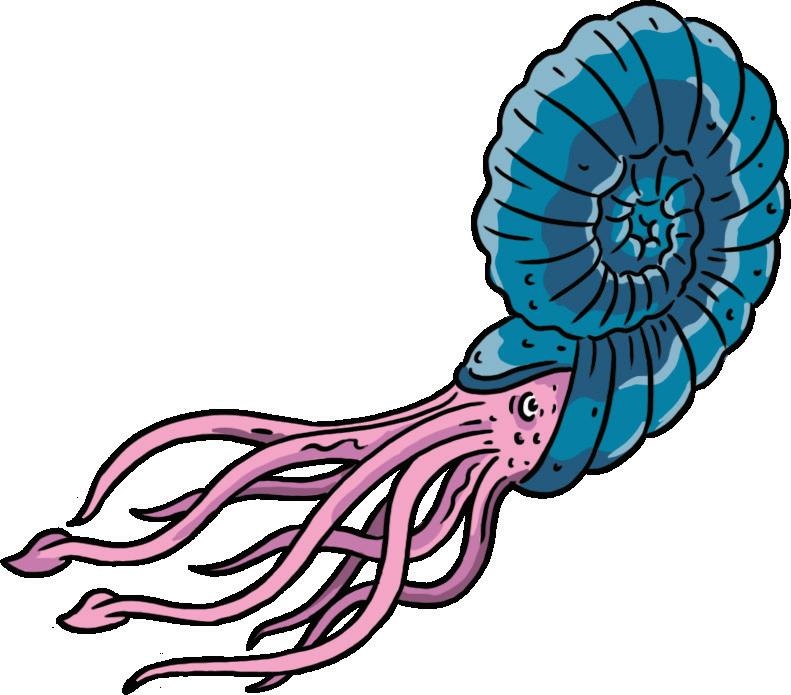

Jellyfish like this one, a sea nettle, have been living in the world’s oceans for more than 5OO million years.
Ammonite Ammoniteswereagroupofmolluscs thatflourishedinEarth’soceans between around 419 million to 66millionyearsago.Theyare distantlyrelatedtomodern octopuses,cuttlefishandsquid.
Thesecolourful,potato-shaped organisms–whicharestillalive today–aretypicallyfoundfixed toahardsurface,suchasarock, seashell and sometimes even thebackofalargecrab!
fossils have been found all over the world with teeth marks and scars.
At first glance, sea squirts seem similar to sponges. But sea squirts have babies that swim around like tadpoles. They push themselves through the water with a special tail containing an early kind of backbone called a notochord. These creatures are still around today, but they first appeared in the Cambrian Period. Sea squirts are thought to be distant ancestors of vertebrates – animals with backbones. Vertebrates include fish, amphibians, reptiles, birds and mammals. Since humans are mammals, baby sea squirts are super important. Some experts think they should go down in prehistory as our great-great-great … grandparents!
Among the most fearsome creatures of the Silurian and Devonian seas was the now-extinct placoderm. It was a giant fish that had jaws and teeth. Heavy armour plating covered its head and throat. Its body had thick scales, and some placoderms had fins covered in armour-plated tubes. These were nature’s first war machines, built like tanks. A placoderm could grow up to 10 metres long and weigh over 4 tonnes. If it were alive today, it could easily snap a shark in two with a single bite.



You wouldn’t want to bump into a sea scorpion, either. It had a long, spiked tail that may have been equipped with a deadly venomous sting. This creature could grow to 2.5 metres long. Sea scorpions appeared during the Ordovician Period and died out along with many other species in what’s called the Permian Mass Extinction, 252 million years ago.
As we’ve seen, Earth formed 4.5 billion years ago and it took half a billion years for life to appear. Fast forward several billion years and the oceans were now a busy place, home to our swimming, hunting and hiding ancestors. :

No life on Earth, volcanoes, rain cools the surface, oceans form
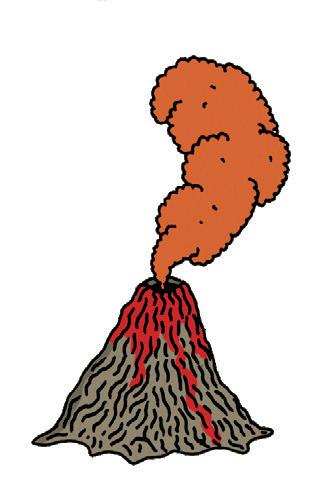
Methanogens (prokaryotes), cyanobacteria, stromatolites, oxygenin atmosphere



Eukaryotes

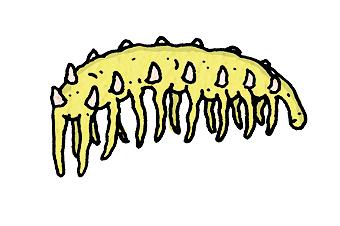
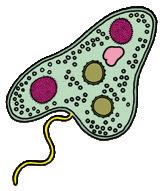
Snowball Earth
Multi-cellular creatures
Shells, bones, teeth
Evolutionary stage PALAEOZOIC
Insects, vertebrates, land plants

Fish with jaws, sea scorpions, worms
Bony fish, tetrapods
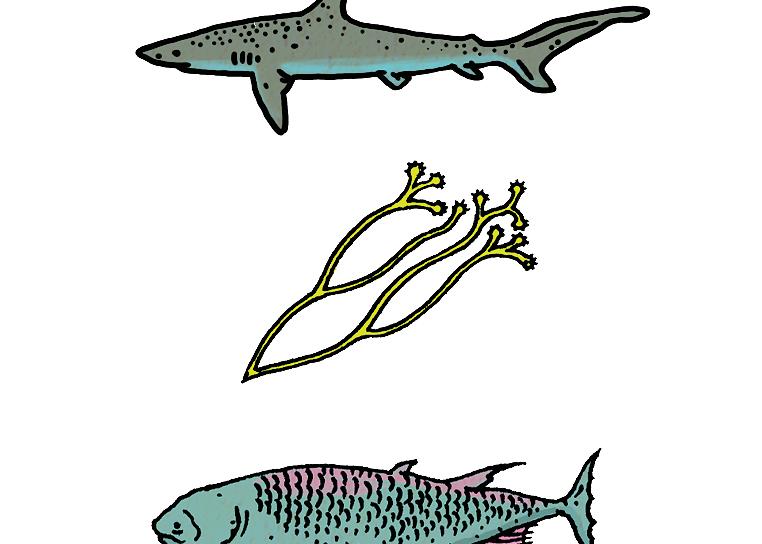
Amphibians, reptiles, forests
Mammal-like reptiles, Pangaea
First dinosaurs, small mammals, ichthyosaurs

Dinosaurs dominate land, pterodactyls inthe skies
Last dinosaurs, social insects, flowers, birds
Mammals grow larger
Whales return to the oceans
Horses, monkeys migrate
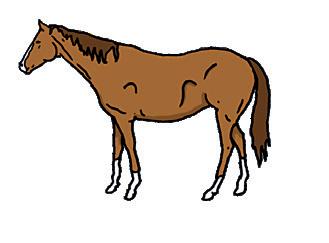
Biggest ever sharks
First bipeds and humans
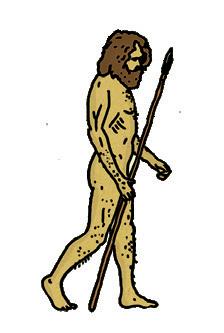
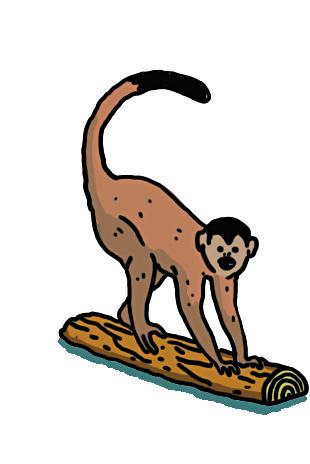
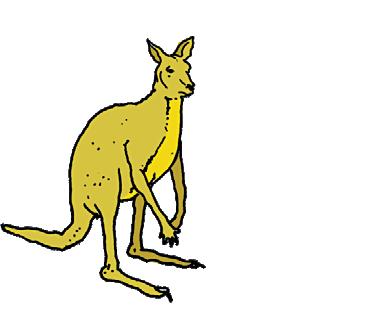
Megafauna extinctions
Farming, first human civilisations
Globalisation, rise in carbon dioxide levels
HA!HA!
This photo of a fantastic home-made space rocket was sent in by Delphi, aged 8. As well as the rocket flames bursting out below, we love the fact that Delphi’s rocket is entirely built from recycled rubbish. ‘I thought I would help the world,’ she told us. Well done Delphi!

Do you like designing and building things just like Delphi? Then send a photo of your greatest creation or design to editor@britannicamagazine. com and, if it’s featured in the magazine, we will send you a copy of this brilliant new book about how engineers are changing the world. Good luck!

Do you love telling jokes and making your friends and family laugh? Then send in your favourite joke, riddle or limerick to editor@britannicamagazine.com and, if yours is featured in a future issue of the magazine, you will win a copy of the hilariously disgusting Gross FACTopia!





What kind of never has any
For a chance to win, just email or send us a photo of your greatest creation! A poor-cupine!
like Because they’re LOL! 48
Send Geography Word Search
Cows produce more milk when they listen to relaxing music.*
*Or should that be moo-sic?!
In our March Issue, we invited readers to get out their colouring pens and pencils to create an illustration bursting with sporting fun and games. And we are delighted to announce that 8-year-old Euan Gray from Erskine Stewart’s Melville School in Edinburgh is the winner! Congratulations Euan, a copy of the giant Sports Timeline Wallbook is on its way!

Connect the Planets Sudoku! 5 1
4 3
1 6
2 5
3 2
5 1
4 3
1 2
6 4
2 5
3 6
6 3 4 1 2 5 3 4 6 4
4 3
3 1
A B Futoshiki! 1 2
2 4 4 3
9 5
Bridge Puzzle
1 2
2 4
PUZZLE ANSWERS A 3 6 2 8

3 1 4 1
Number Triangles!
1 4
3 2
3 2
4 1
2 3 2 3
1 4
13 6
B 4 9 2 11
2 2
1
Spot the Difference Word Wheel 1. Beanstalk 2. Blanket 3. Stable 4. Absent 5. Atlas 6. Snake

5 3 4 5 2 4 5 3 4
4
5 2 1 6 Changing Rooms
3
Picture Quiz Cucumber

C 7 5 8 13
12 15
E V E N E Z U E L A F Y R C F T B G V E T G P A D N A W R F E A G Z K I V F P G H X L S L G W R R K R U J S P H P A P K I Y E T E I H D R I A Z E X Q D P Z Q J O S S M N A F U Q T T L N V N U G A Z Q P W P R B K T O E D A L I A A R Z M Q Z I B E U J F M T W Q A L N C Z I B Q N A G C A R L A U F A M N E S G D U I D J M A L S N L A S P E W T K M Q O A A H R X B U A A L N Q F G X E U W P A A F U B S Y K A N W R K U Q K R A M N E D Z D T P F R N G K S I A A Z E R B A I J A N B J V A A D H N T N H I X N N W X U A H A B T I M I E S H O A Z T E Y U Y M H U O D C N O A H E D W B R M B V A E Z L N D V G E N A M B I A E I F C X G V U G R C Y N Q F G M G G Y L O K I S D I F A Z U Y P N I E T S N E T H C E I L Y Q R Q S E T Y Z L P T I B X O S K E T Q S Y U J A M A I C A Z D A E T R C M K D P S 3 3
Dartboard Swimming pool Dominos Tulips Car wheel


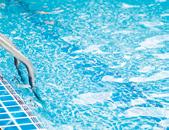

3 49
Highland cow

What do you call a big-spending chicken?

WhatQuestion: is red when angry, blue when cold and pale when scared?

YourAnswer:skin!
Why did the call for gherkin help? pickle!
It was in a
What is a llama’s
favourite drink?

Llamanade!
How do
Question: Imagine you are in a dark room. How can you get out?
Answer: Imagine you are somewhere else!

travel from one dog
to another?
They
Eggs-travagant! itch-hike!

Published by
What on Earth Magazines Ltd, The Black Barn, Wickhurst Farm, Leigh, Tonbridge, Kent, TN11 8PS
Editor

Andrew Pettie
Art & Design Director
Mark Hickling Designer Susanna Hickling
Production
Sarah Epton
Contributors
Kate Hale, Andy Forshaw, Andy Smith, Steve Tomecek, Marcos Farina, Christopher Lloyd, Andrés Lozano, Julie Beer, Susanna Hickling, May, Lisa Thomas, Chris Harrison

With thanks to Andy Forshaw, Natalie Bellos, Casey Neumann, Katy Lennon, Daisy Symes, Helen Thewlis, Olivia Galyer, Nell Wood and the whole team at What on Earth Publishing
Editorial Consultant

Nancy Feresten
Business Development
David Falzani
CEO, What on Earth Magazines
Christopher Lloyd For Encyclopaedia Britannica
Alison Eldridge, Managing Editor

Printing and distribution
Warners Midlands PLC, The Maltings, Manor Lane, Bourne, Lincolnshire, PE1O 9PH
Digital Marketing
Jamie French
Editorial enquiries editor@britannicamagazine.com
Subscriptions
O1778 392479 britannicamagazine.co.uk
Picture credits
Selected library images from: Getty Images; Shutterstock; Nature Picture Library; Alamy; Science Photo Library; NASA. Snap It: Zhenhuan Zhou/2O23
Sony World Photography Awards; Martin Rickett/2O23 Sony World Photography Awards; Jordi Coy/ 2O23 Sony World Photography Awards; Antonio Liebana Navarro/ Wildlife Photographer of the Year 2O23. Eureka: NASA/JPL-Caltech; BBC/Tony Joliffe/ESA/Novespace.
Copyright 2O23 What on Earth Magazines Ltd. All rights reserved. No part of this magazine may be reproduced or transmitted in any form, including photocopying, without permission in writing from the publishers.
12-MONTH
Sign up now for £59.99 £47.99 to receive:
✓ A year’s worth of printed magazines
✓ FREE access to all our digital editions
✓ FREE sign-up gift of Britannica’s All New Children’s Encyclopedia WORTH £25!

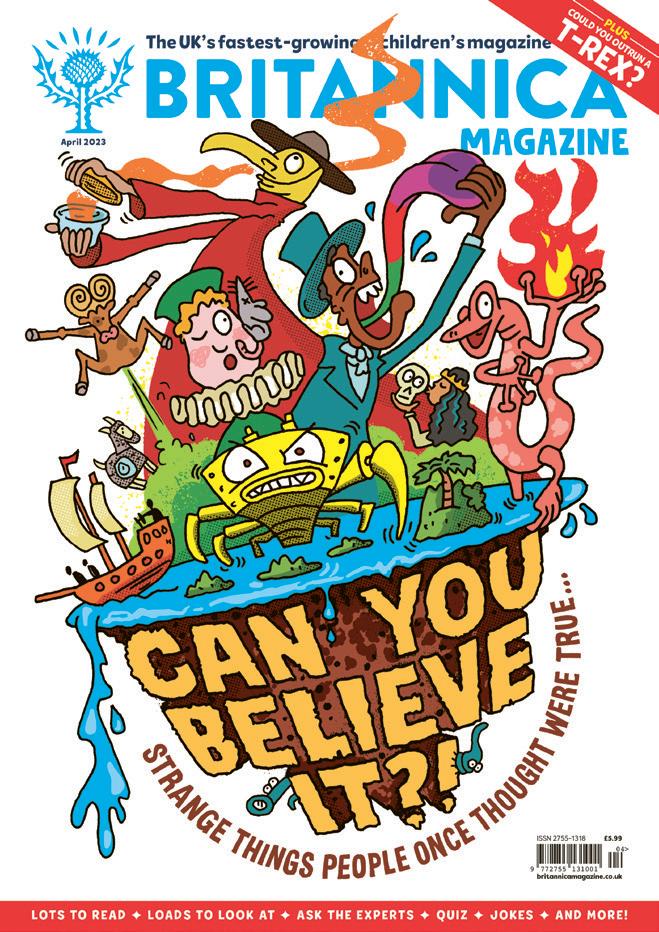
Sign up now for £44.99 £35.99 to receive:
✓ A year’s worth of printed magazines
✓ FREE first three issues

✓ FREE access to all our digital editions
FREEINCLUDES WORTHBOOK £25! FIRST 3 ISSUES FREE!
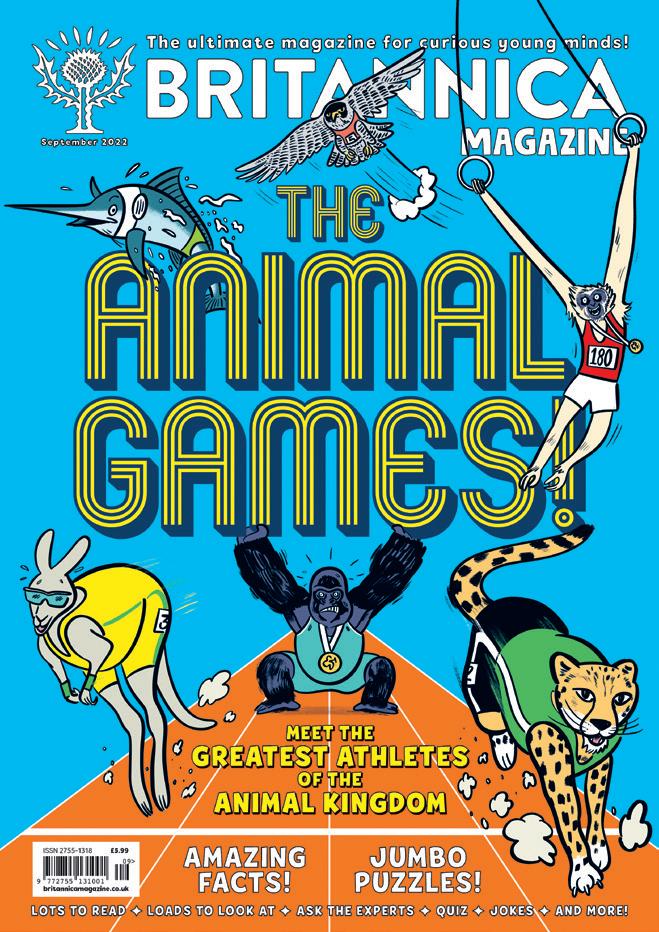
6-MONTH
Sign up now for £29.99 £23.99 to receive:
✓ 6 months’ worth of printed magazines
✓ FREE access to all our digital editions

✓ FREE sign-up gift of Britannica’s FACTopia! Follow the Trail of 4OO Facts WORTH £1O!
FREEINCLUDES WORTHBOOK £1O!
